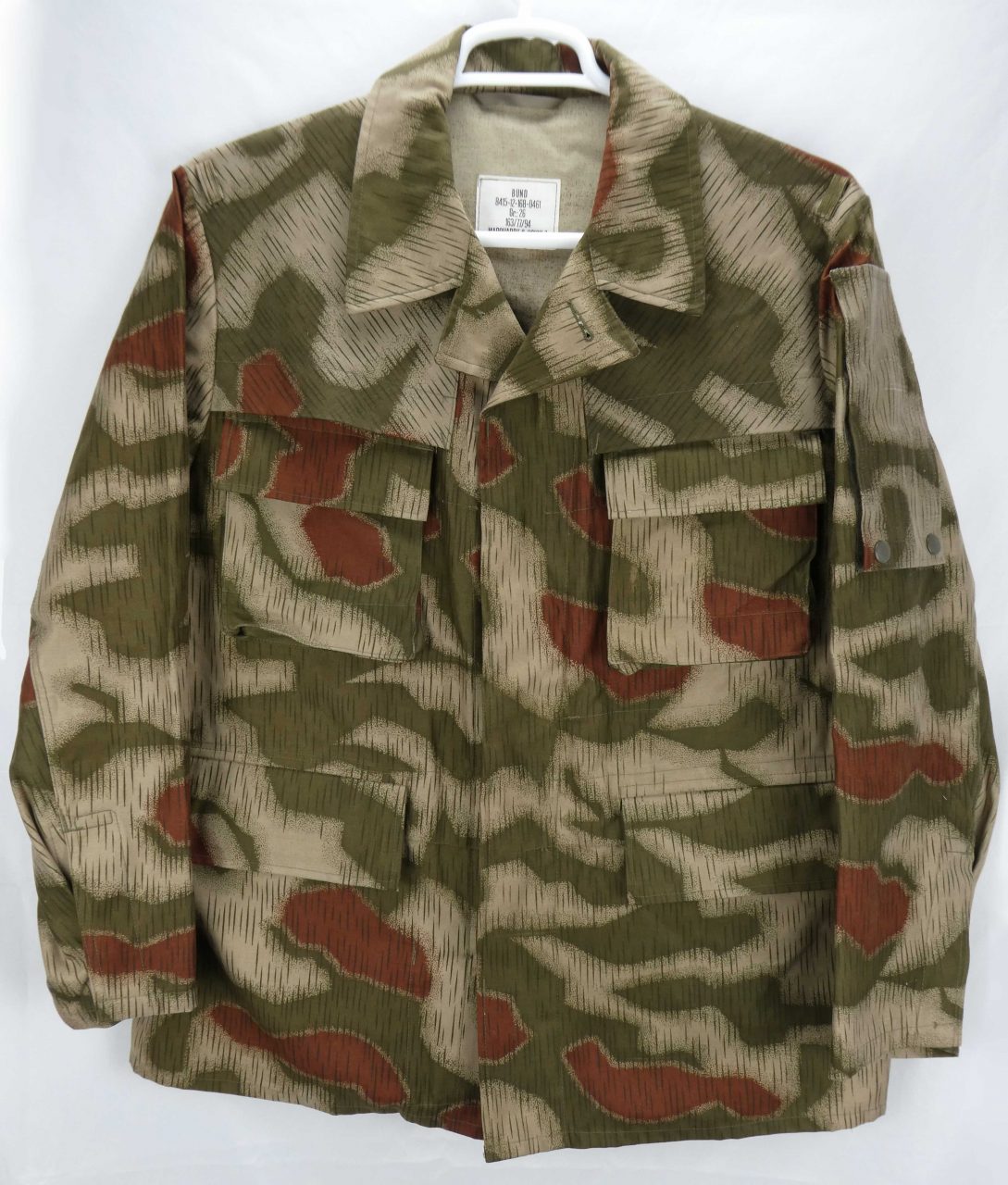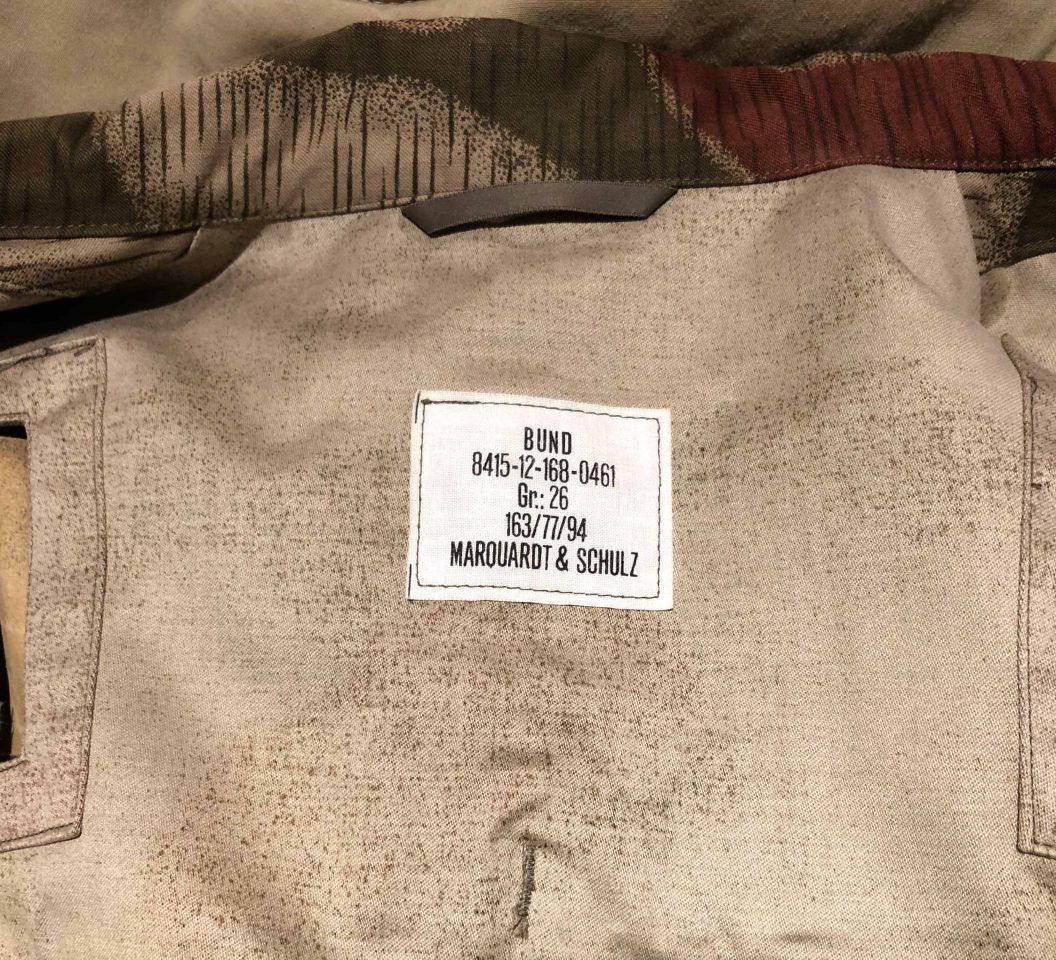The Bundesgrenzschutz (BGS) was West Germany’s border guard force. While nominally a police force due to early Cold War limitations against West German re-armament, they had a distinctly paramilitary, almost Wehrmacht-like, appearance until the 1980’s, since they were expected to be the first responders to a potential Soviet invasion and to act as light infantry in such a case. Their distinctive camouflage uniforms were a reprint of the WW2 Sumpfmuster pattern, albeit in slightly different colorway. Despite the helmet’s associations with the Nazi past, the BGS also used the Stalhelm design for a time.[1]
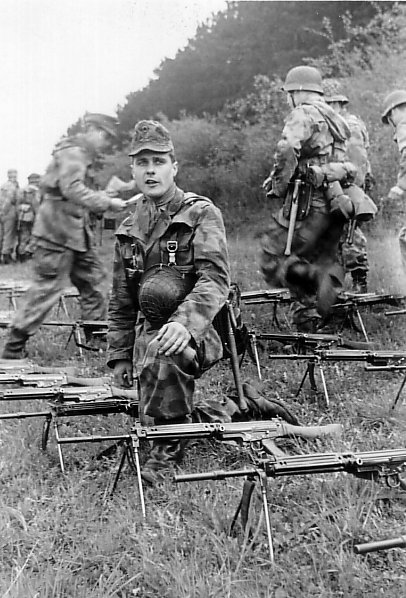
While the BGS’s role and appearance was a product of Cold War tensions, they were a source of controversy in Germany, particularly in the 1960’s when a new generation started to re-examine the Third Reich period. Eventually, a series of press scandals due to them being a paramilitary police force combined with their Wehrmacht-like appearance caused the BGS to transition to a more civilian, actual police-like role.[1][3]
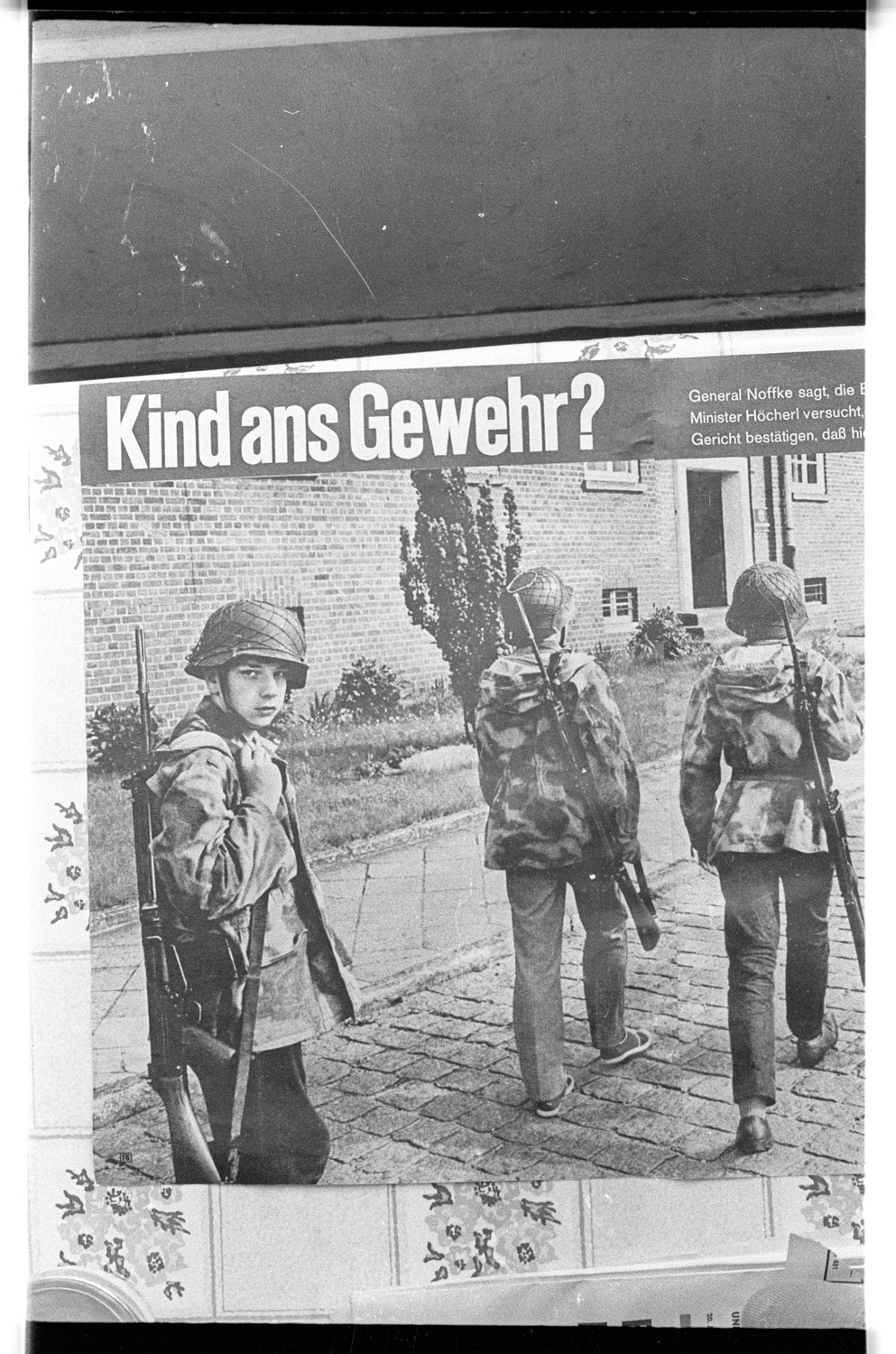
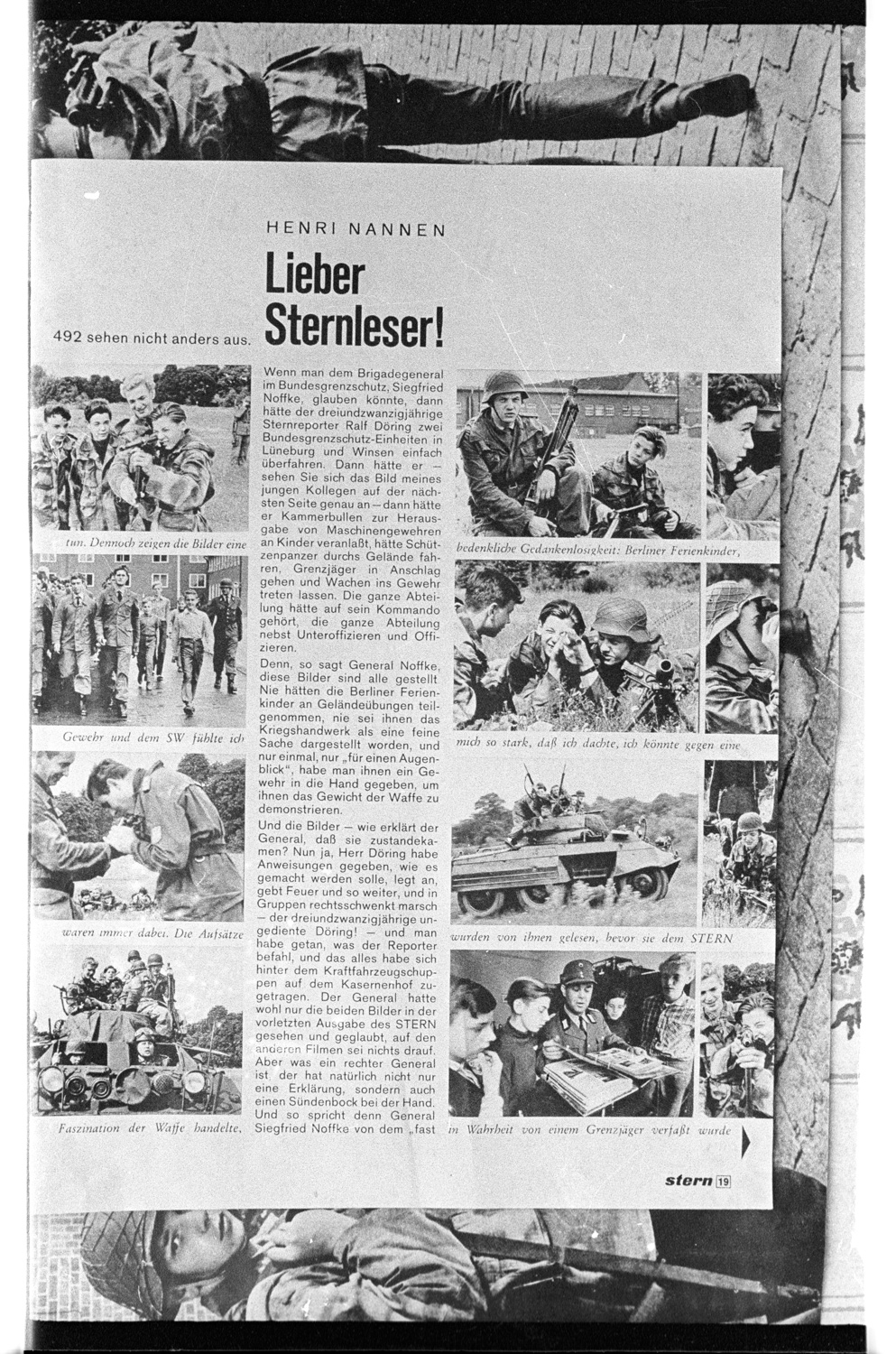
They officially changed its uniforms to a more civilian appearance in 1976, though the Stalhelm was still used until the mid-1990’s [4].
More social and historical information about the BGS is available at: https://escholarship.org/content/qt6hr297n8/qt6hr297n8.pdf?t=pamvak
Sample 1: 1968
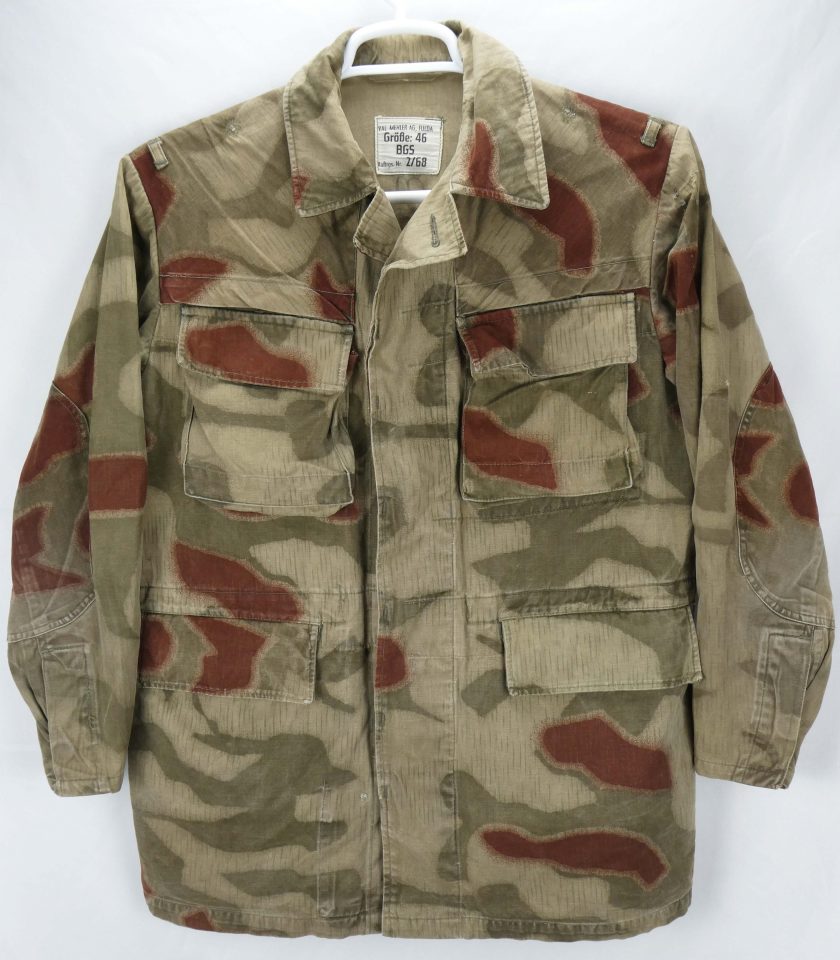
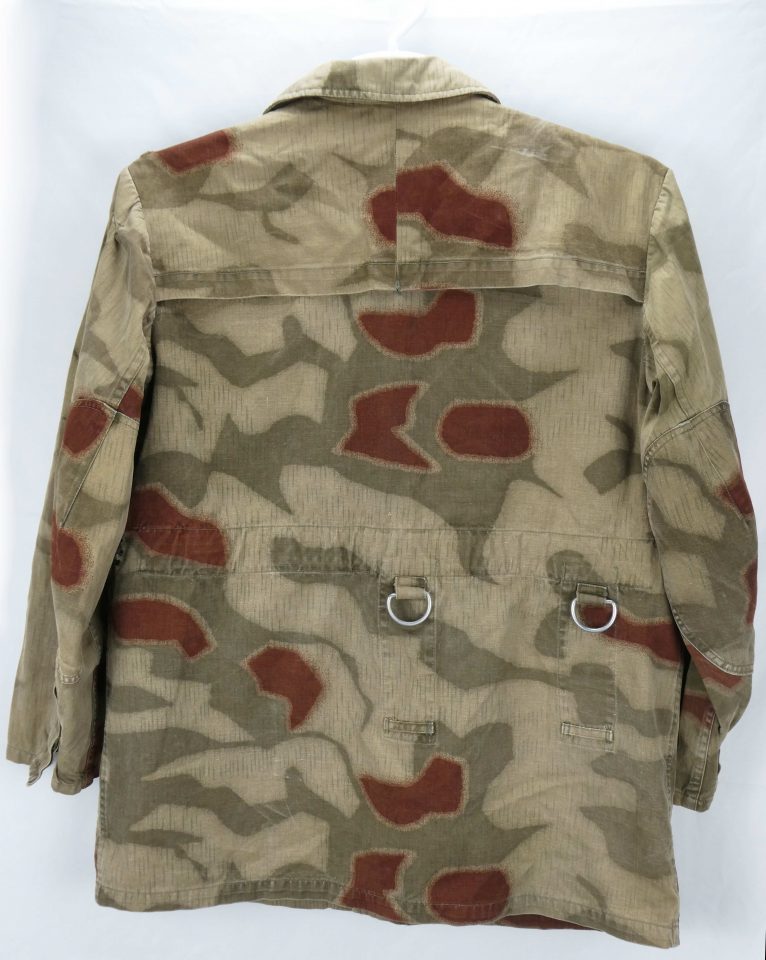
Arm pocket was removed.
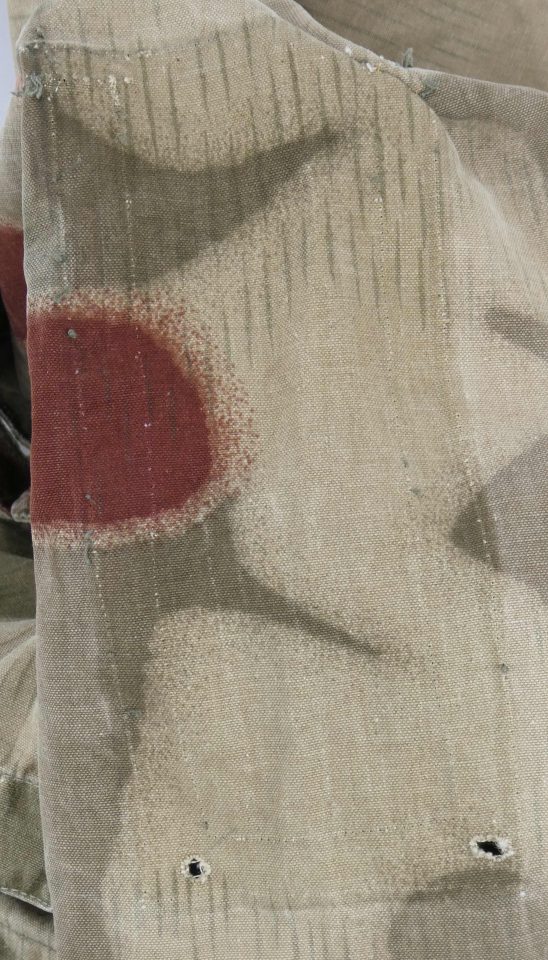
Tags:
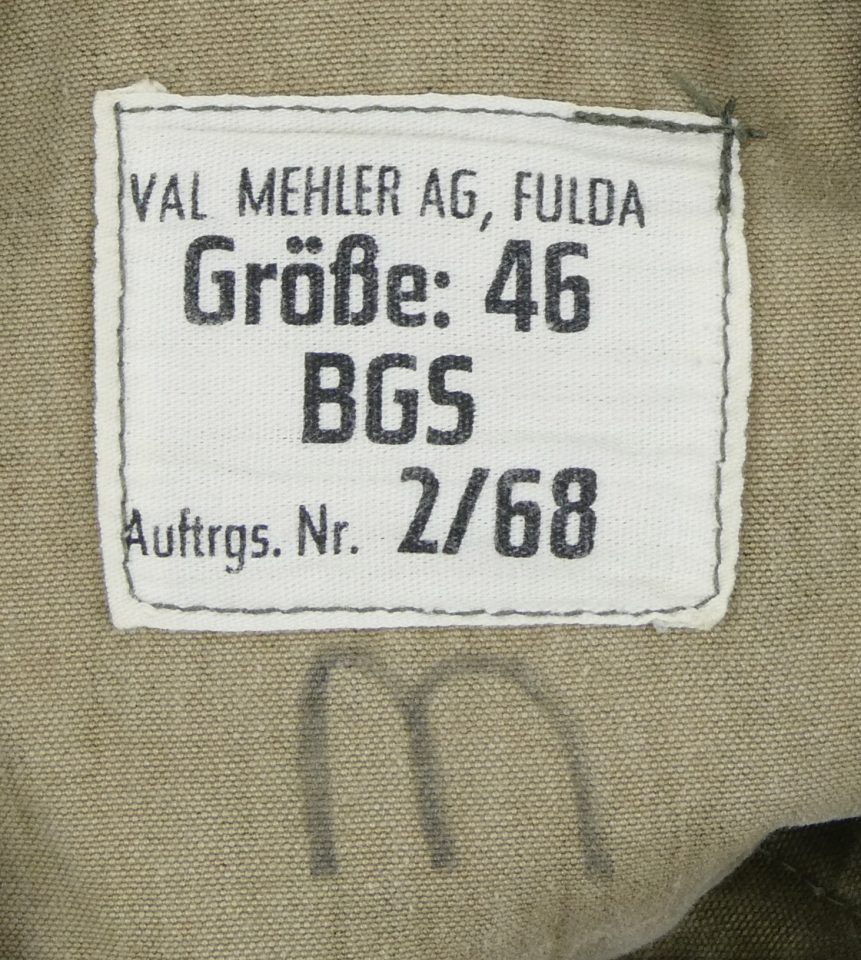
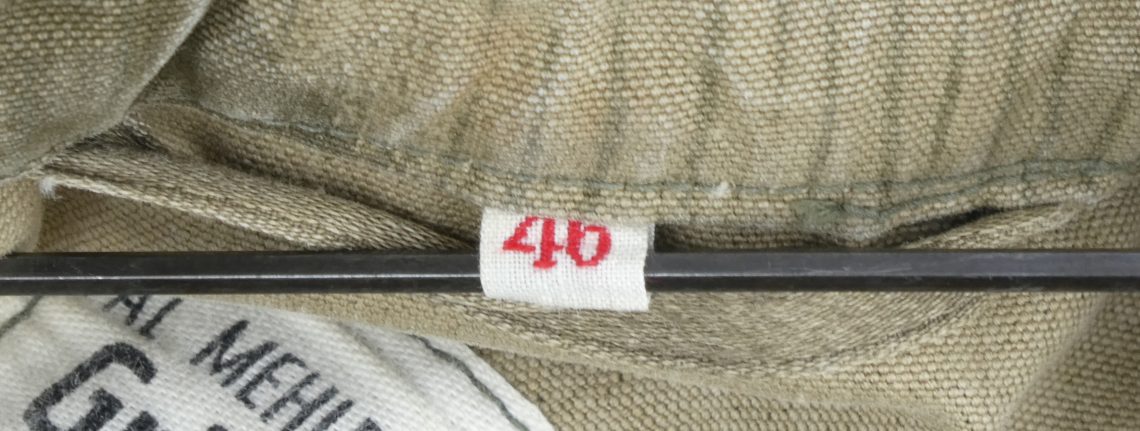
1968 date.
Collar:
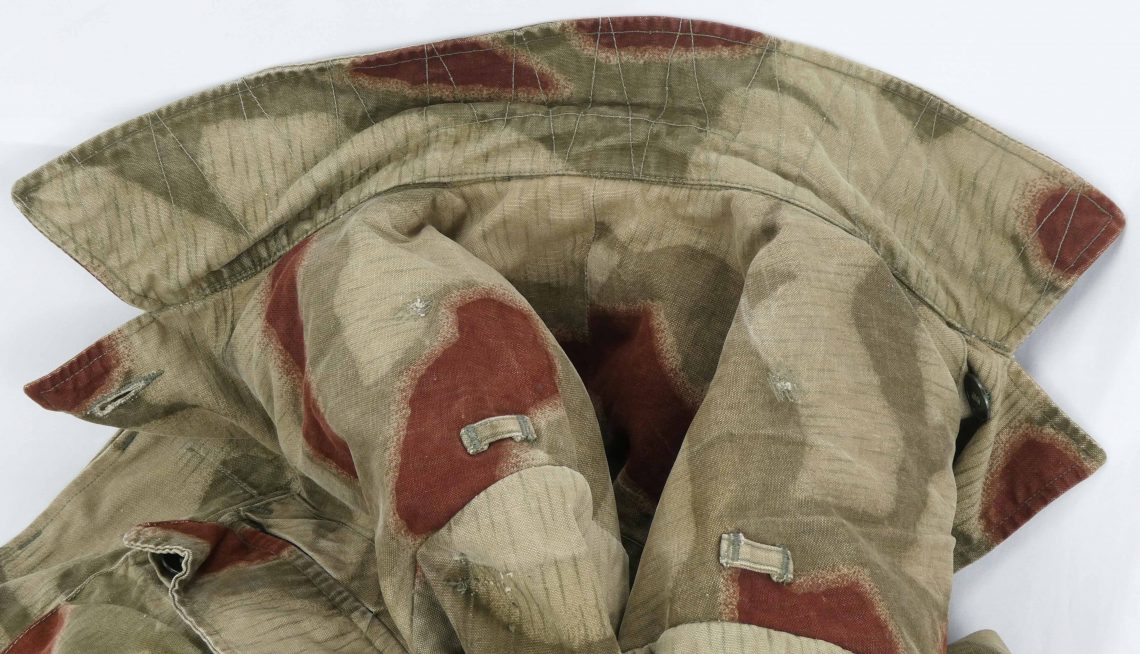
Inside:

Upper Pockets:

Lower Pockets:

Inside has pocket loops.

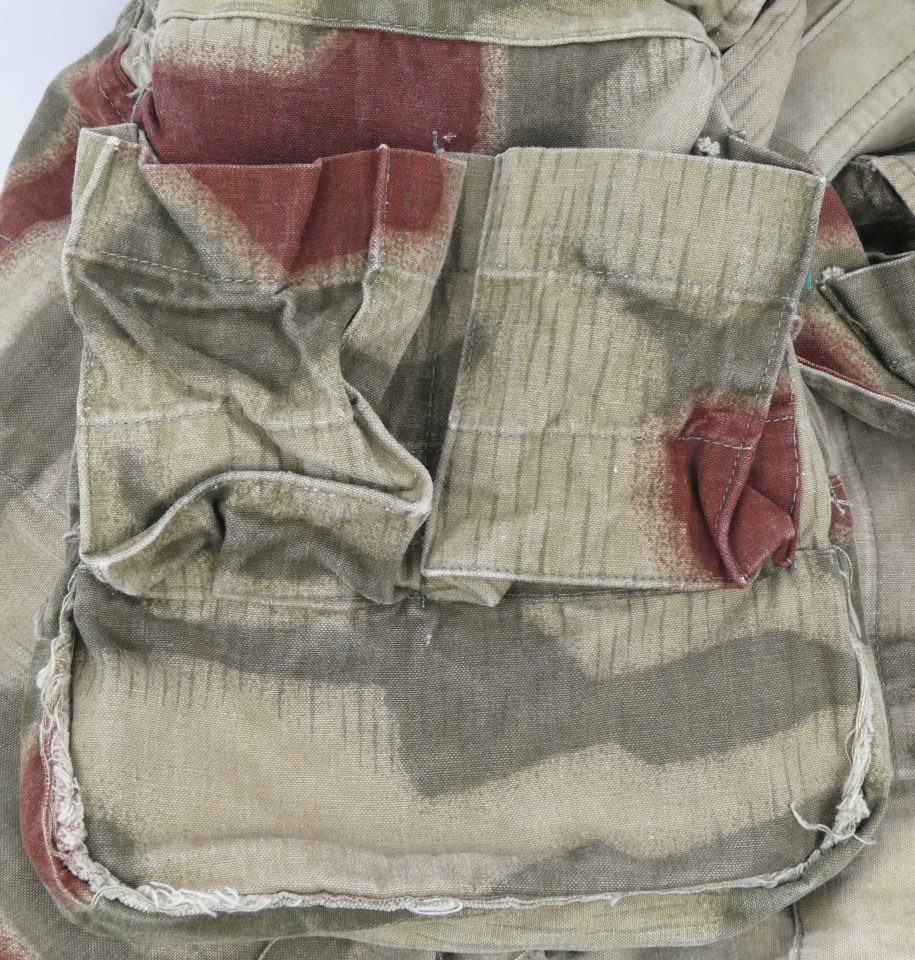
Elbow:
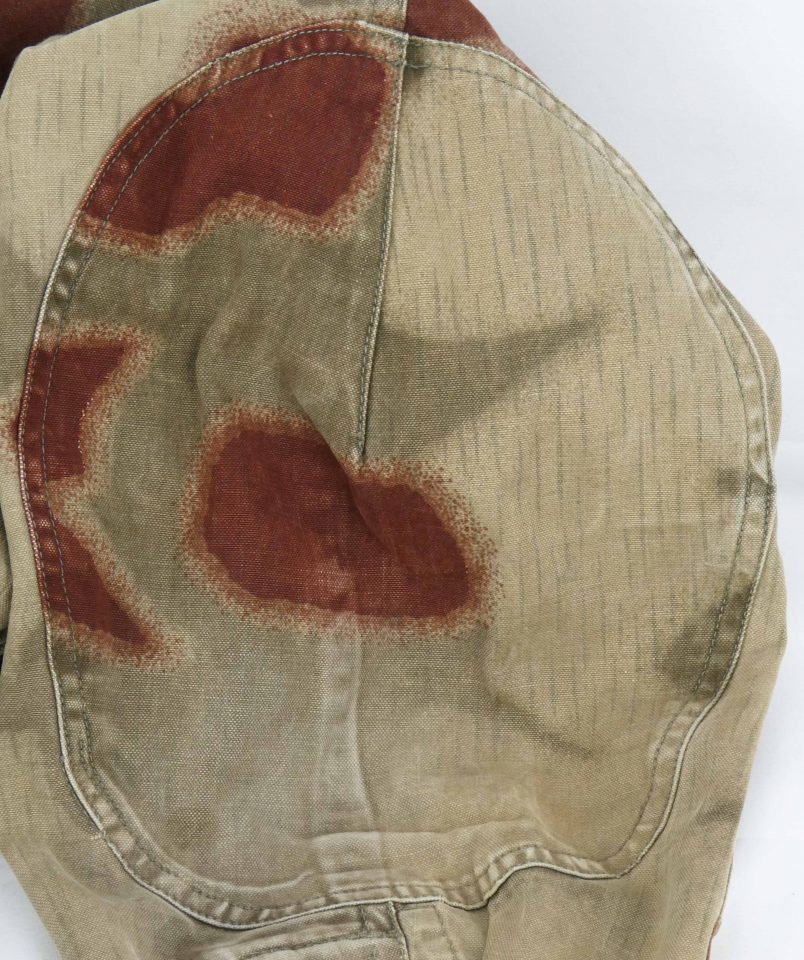
Cuffs:
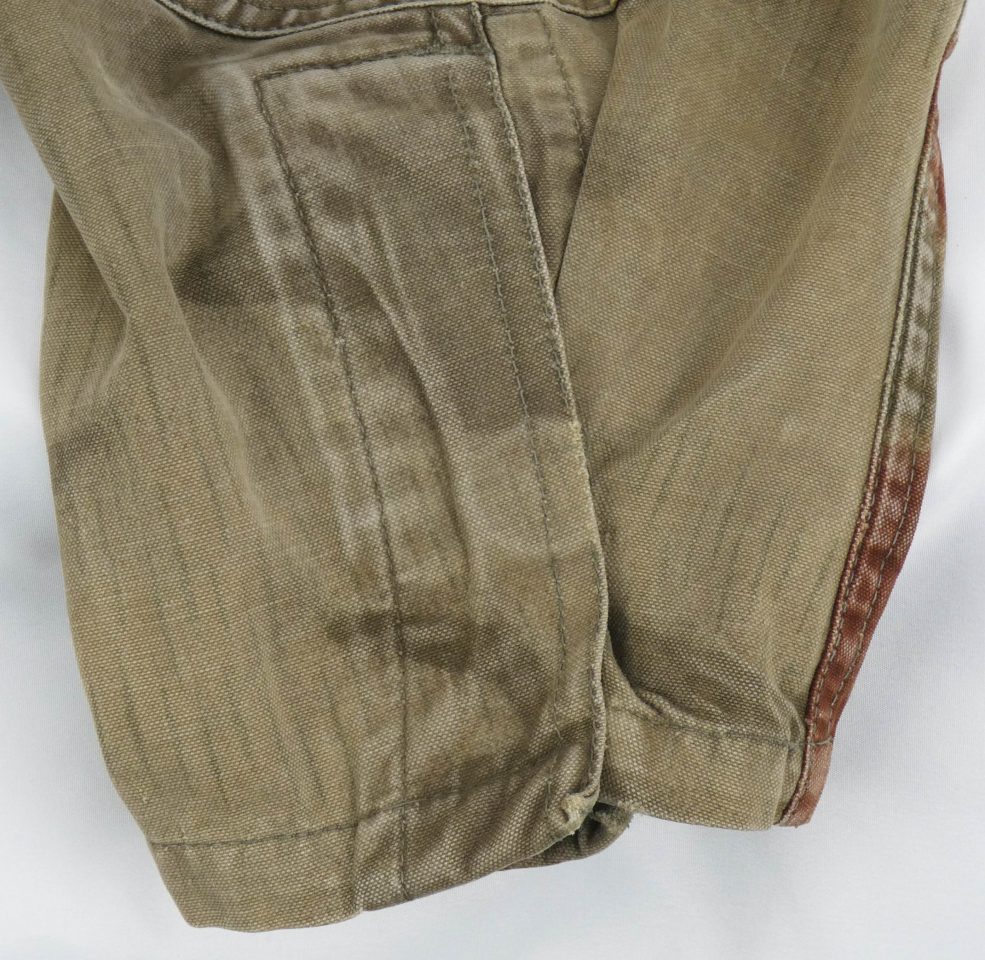

Bandage Pocket:
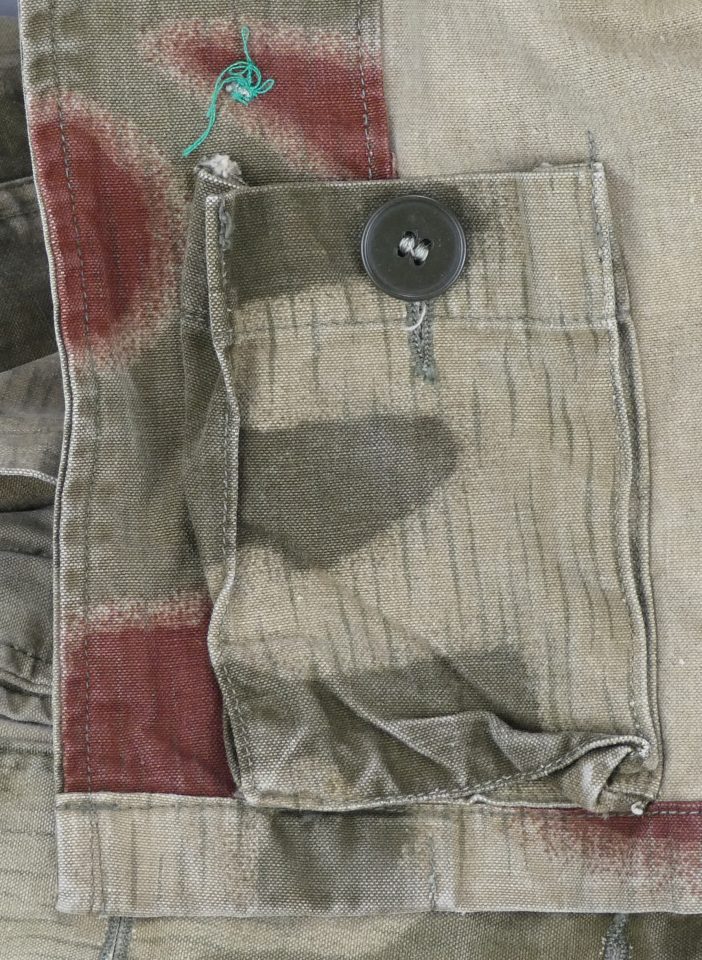
On inside front by opening.
Sample 2: 1971
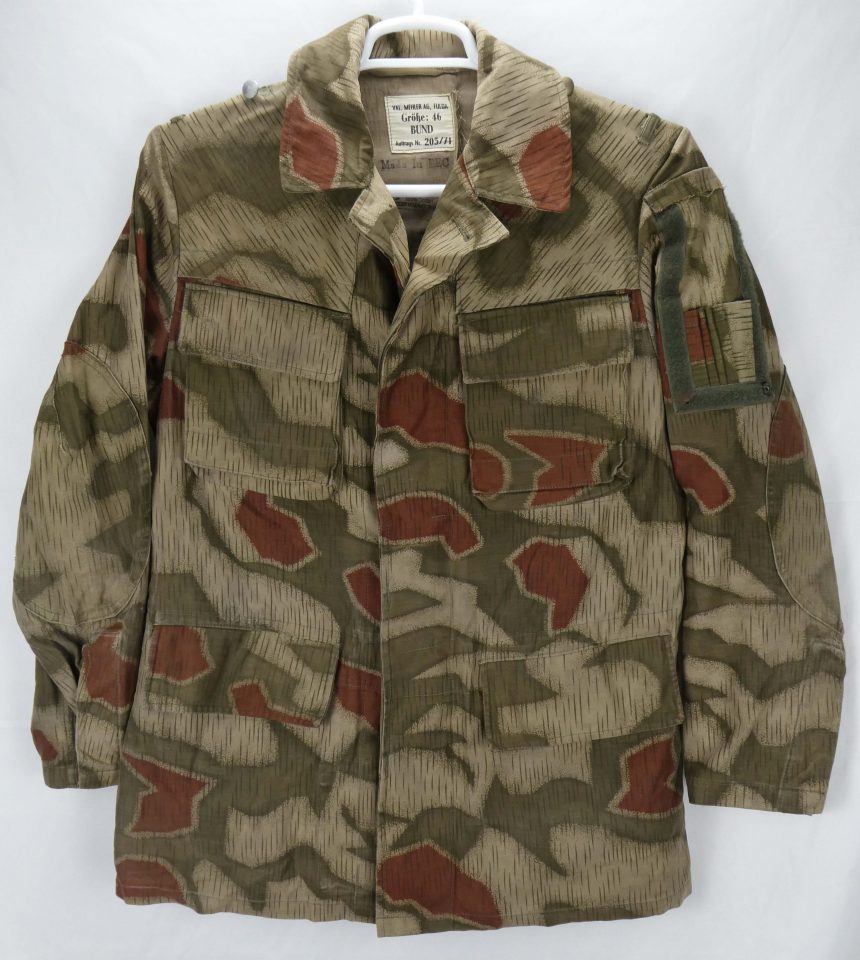
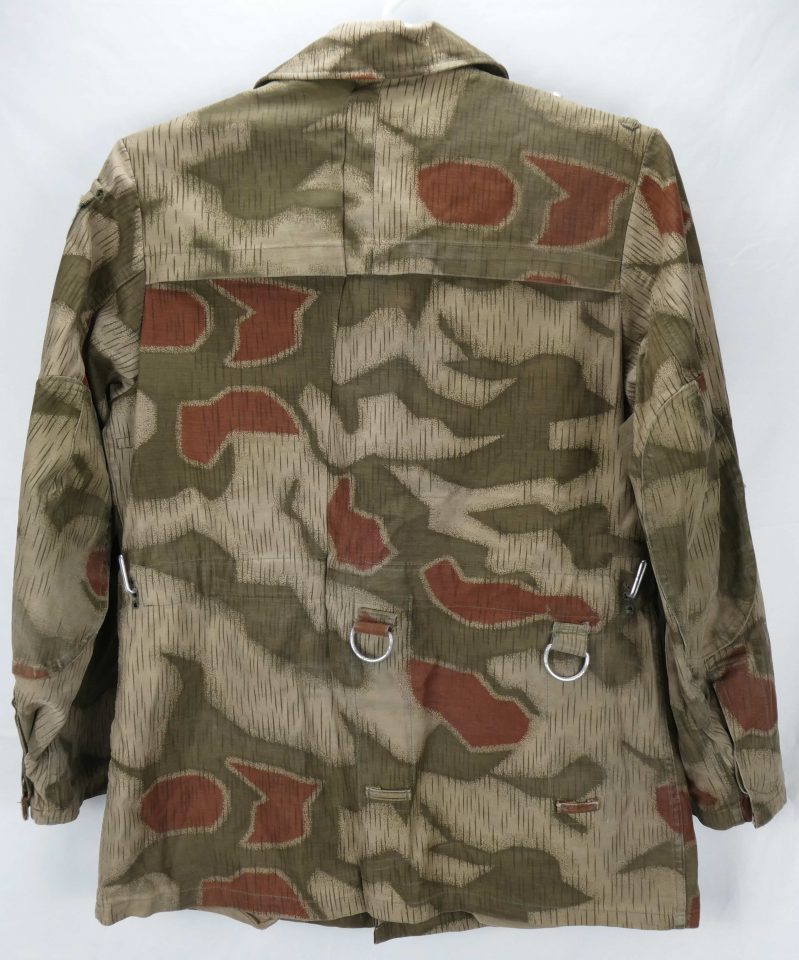
Metal hardware to support webbing:

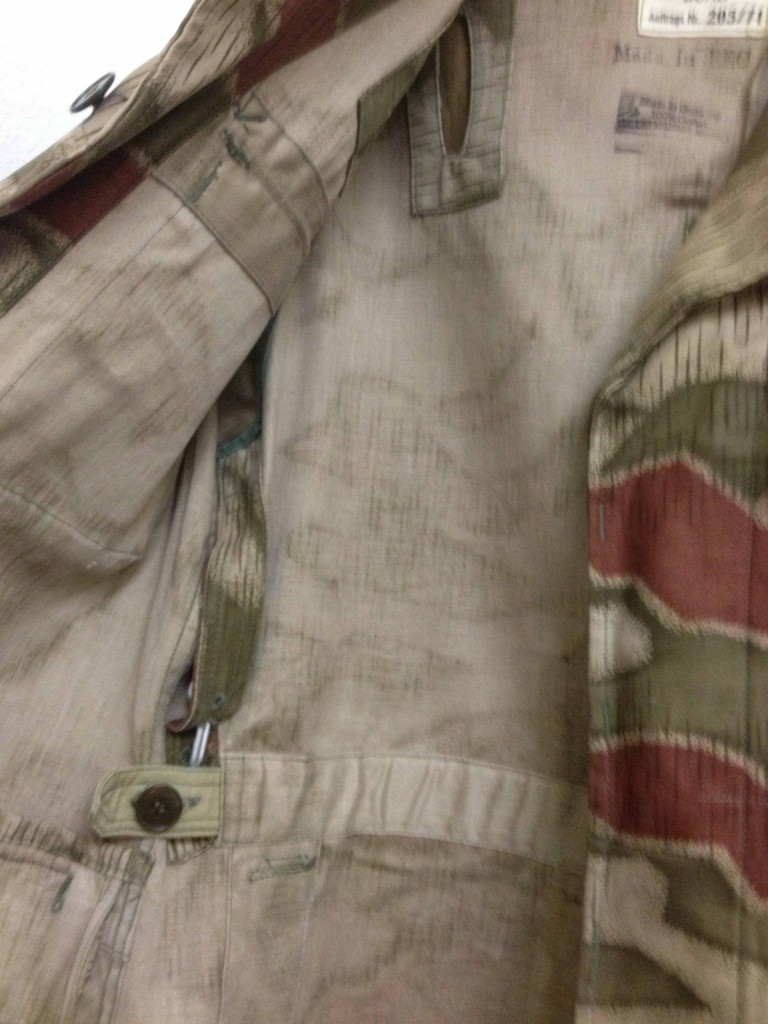
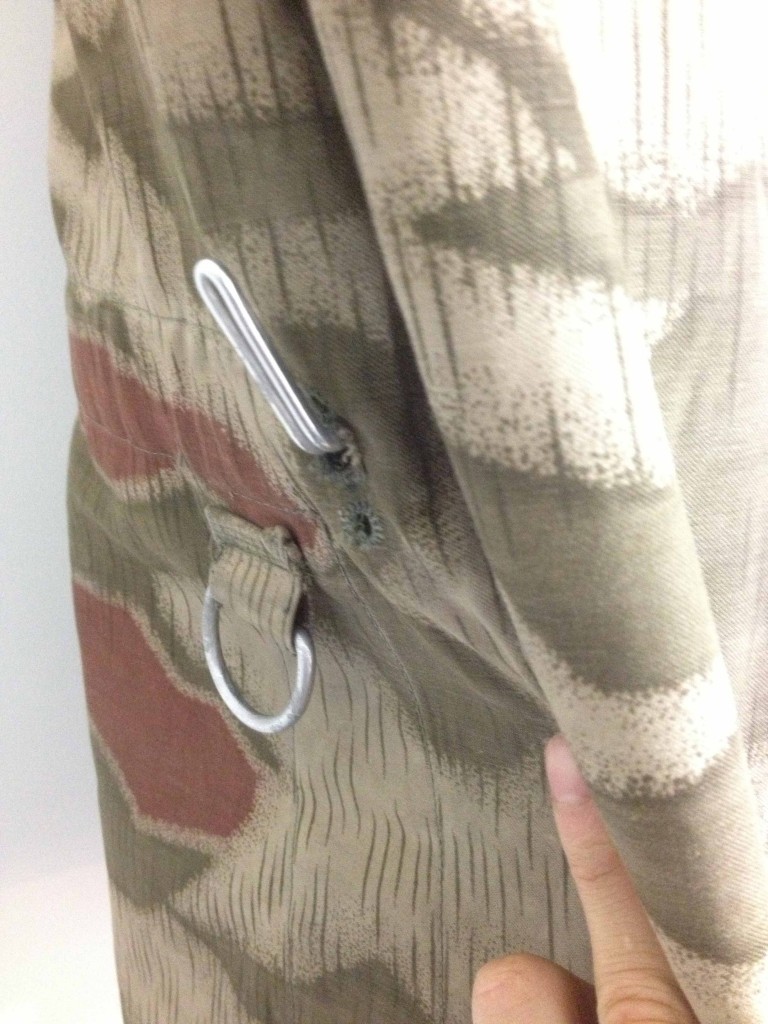
Webbing shoulder straps intended to go under shoulder panels?:
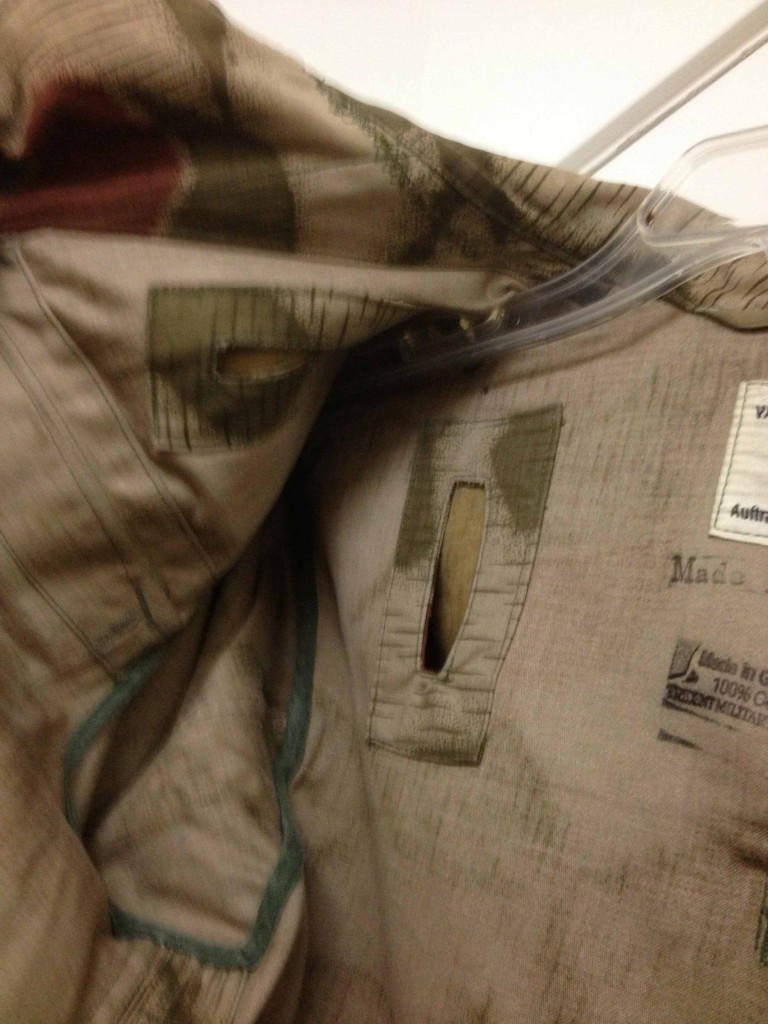
Imported by Trident Militaria, likely in early 1990’s due to “Made in EEC” stampe (name defunct on November 1, 1993)[5] and “Made in Germany” (not “West” or “East”)[6]:
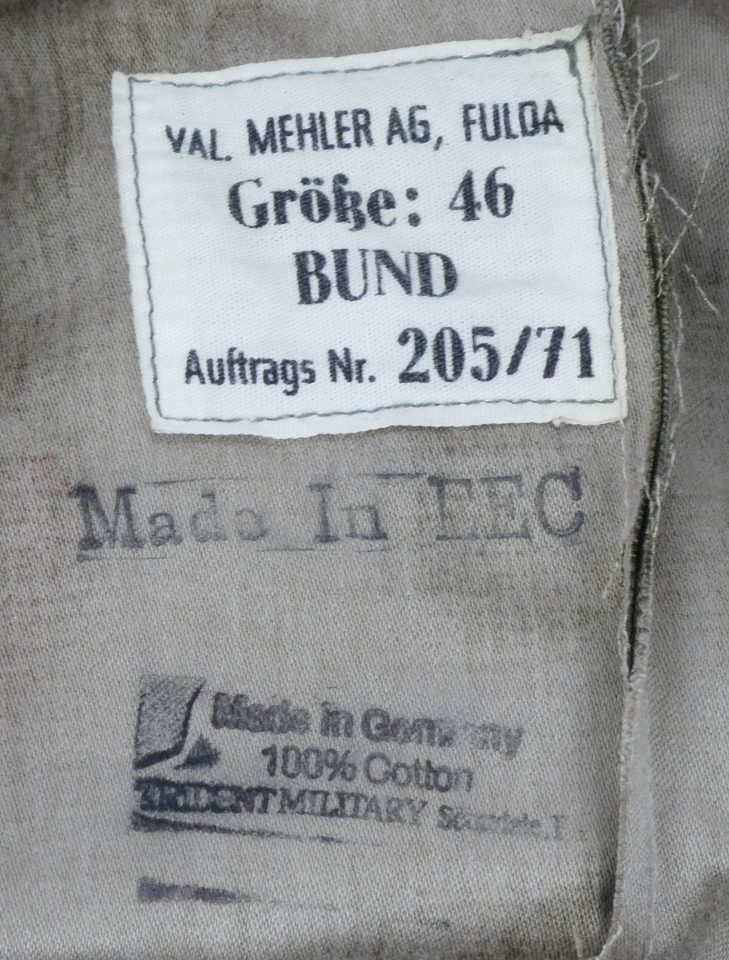
Sample 3: Late 1970’s (1975?)
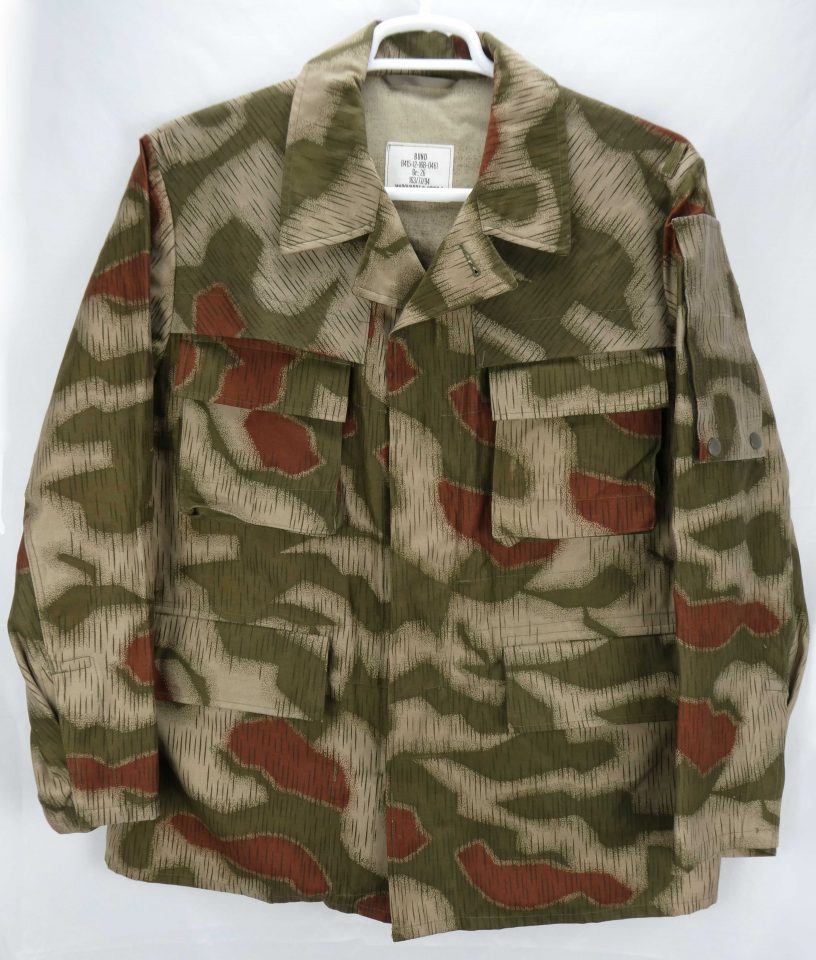
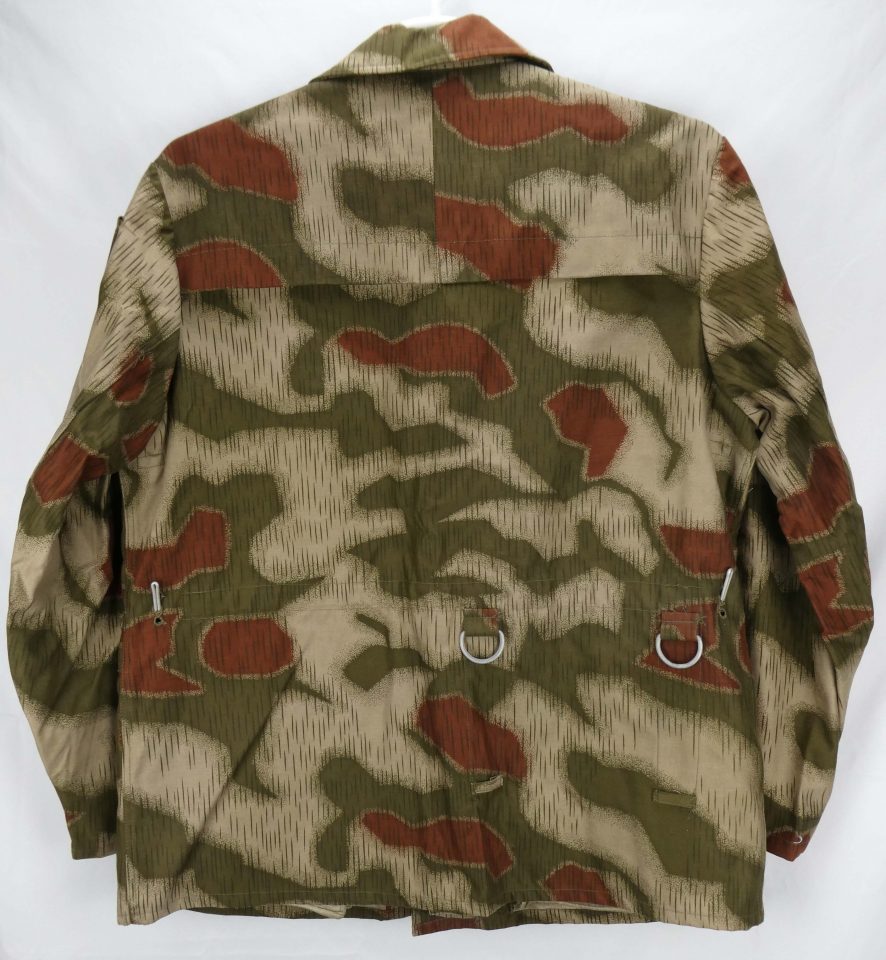
Mint condition, very similar to Sample 2, except NATO stock number (NSN) and no date on tag. Material is a cotton twill, not poplin like Sample 2.
Has pocket at inside front for bandage:
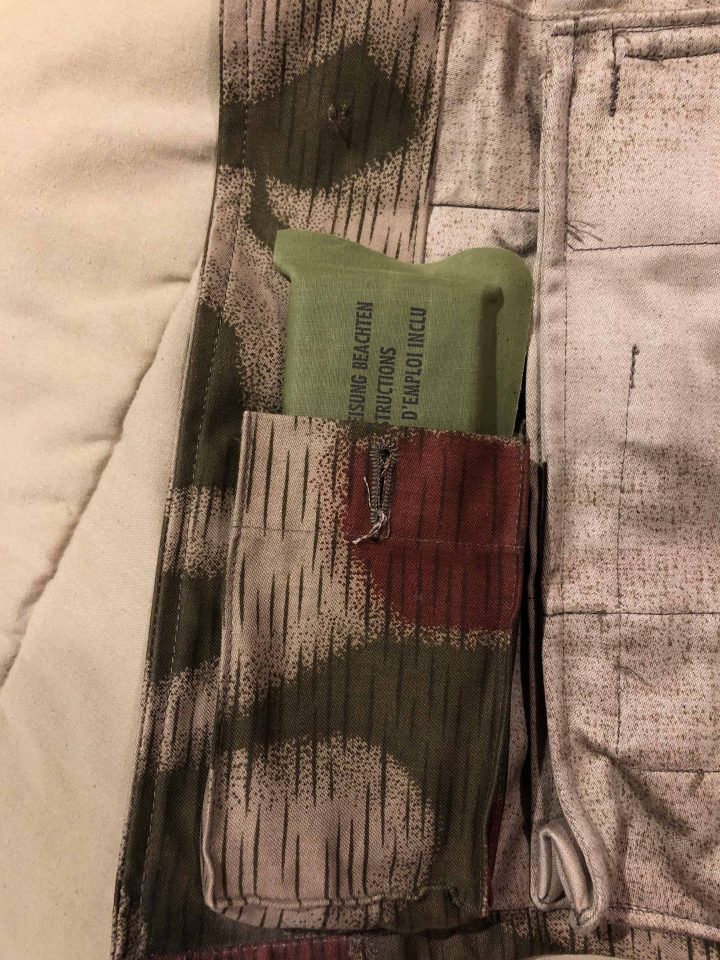
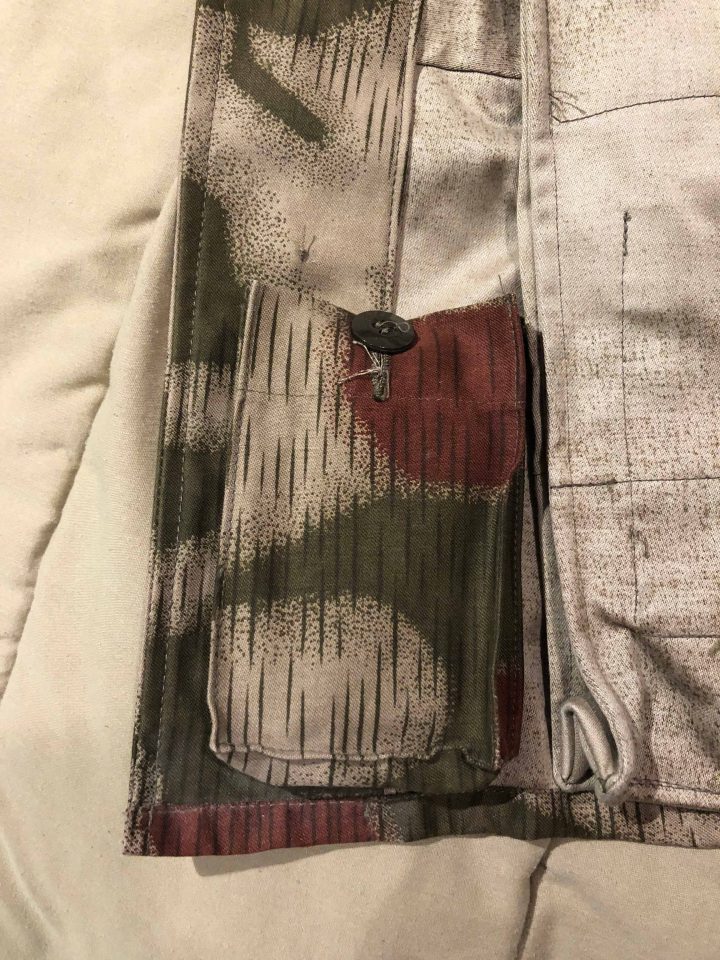
Bandage is dated 1965.

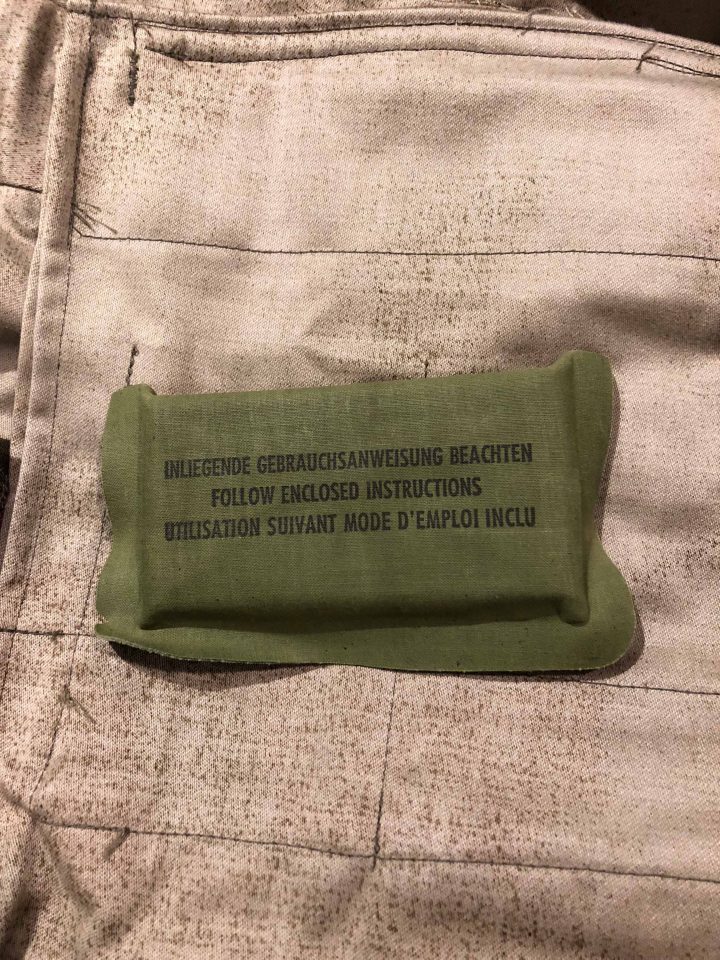
Bottom bellows pocket has organizer loops inside:
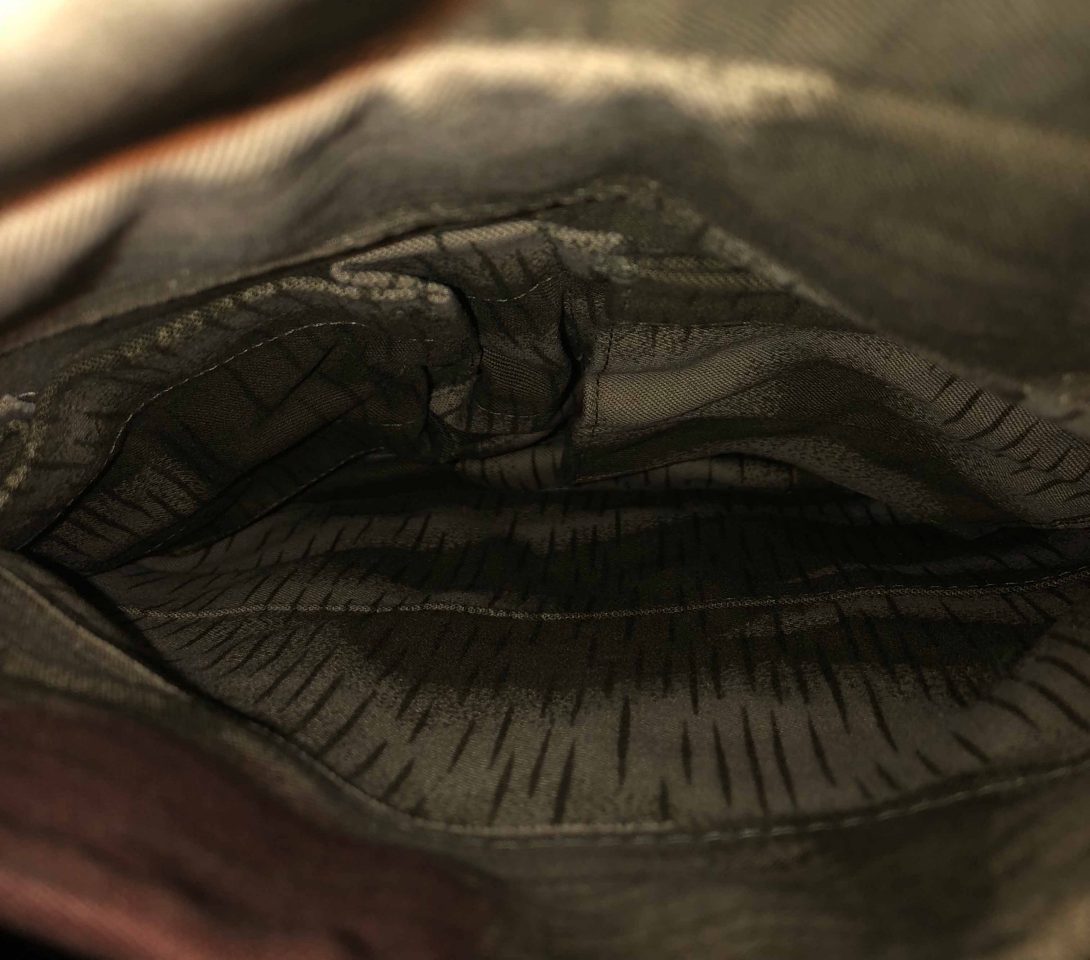
Shoulder Pocket:
The flap of this part of the jacket is often ripped off as part of the demilitarization process before surplus sale since the BGS insignia is sewn here (source: https://www.wehrmacht-awards.com/forums/showthread.php?t=252712&p=8537608) .
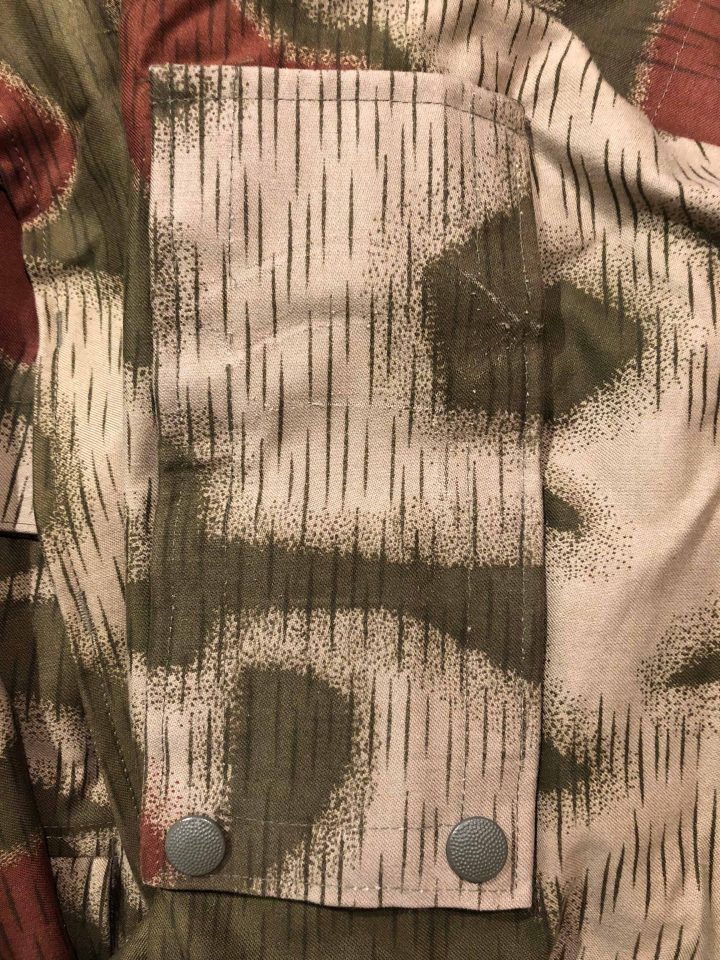
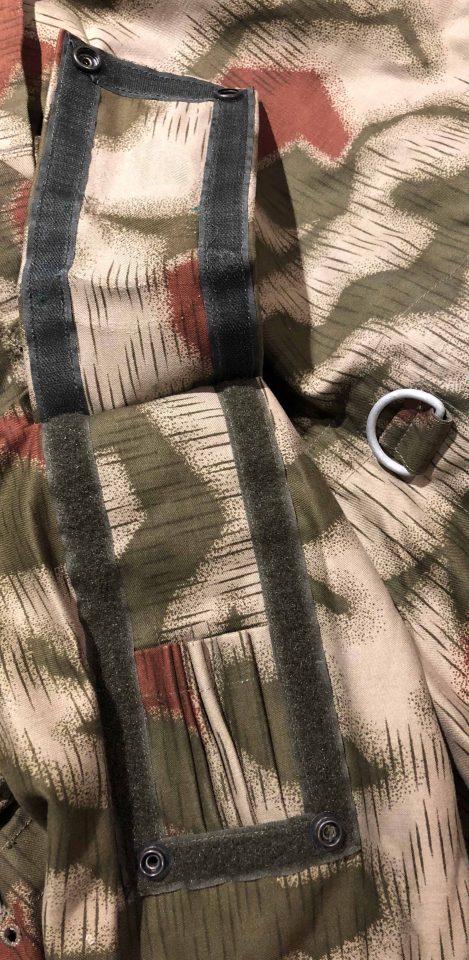
Came with greatcoat insignia that is too big for pocket flap.
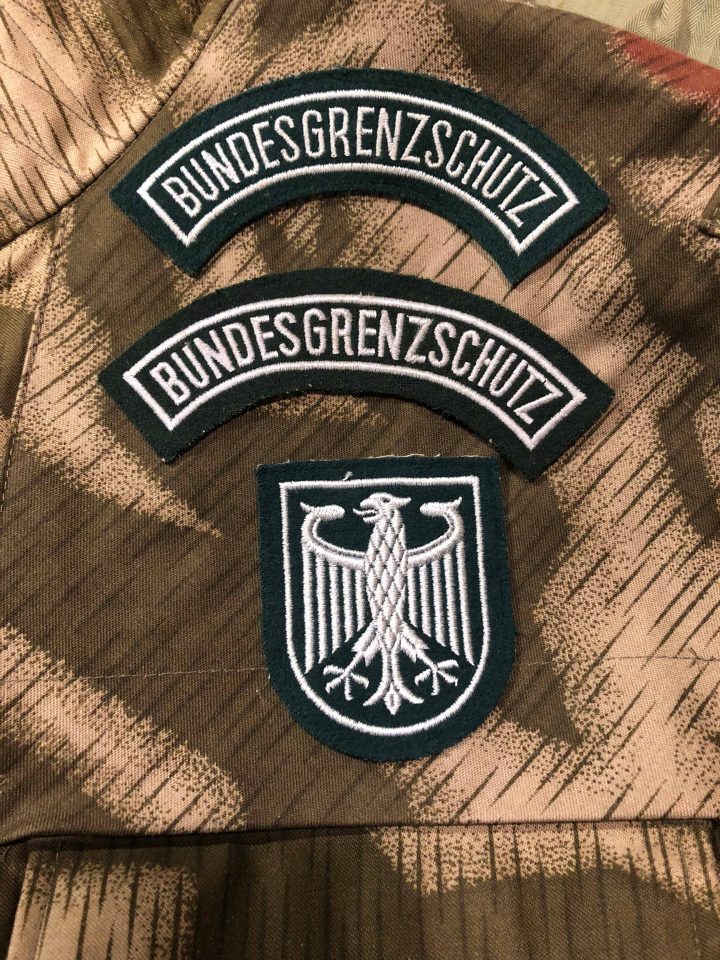
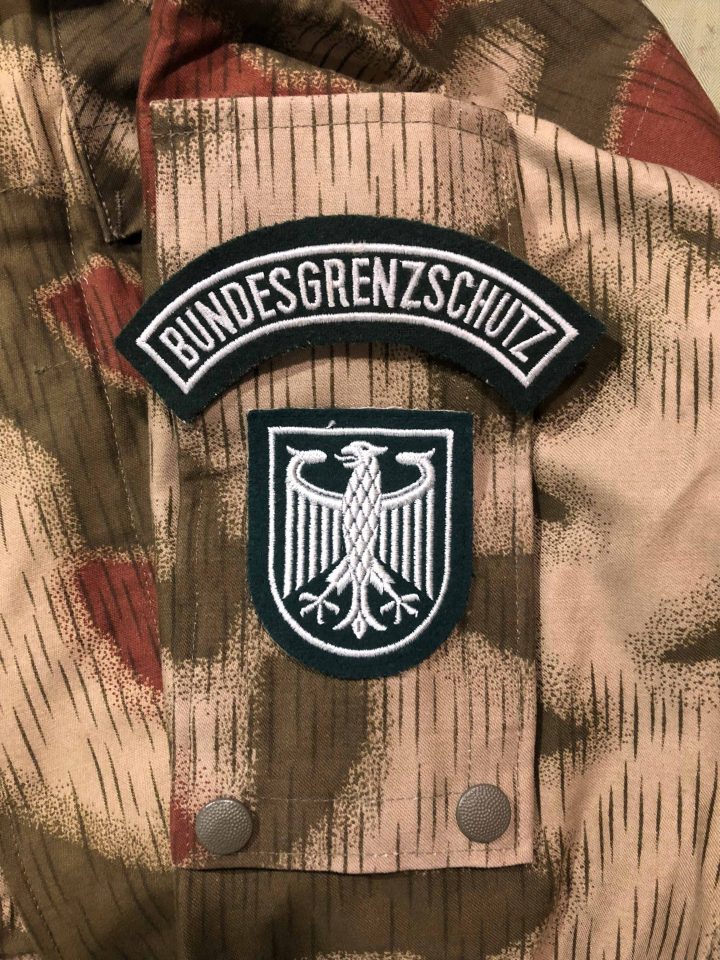
Sample 4: 1957 Prototype
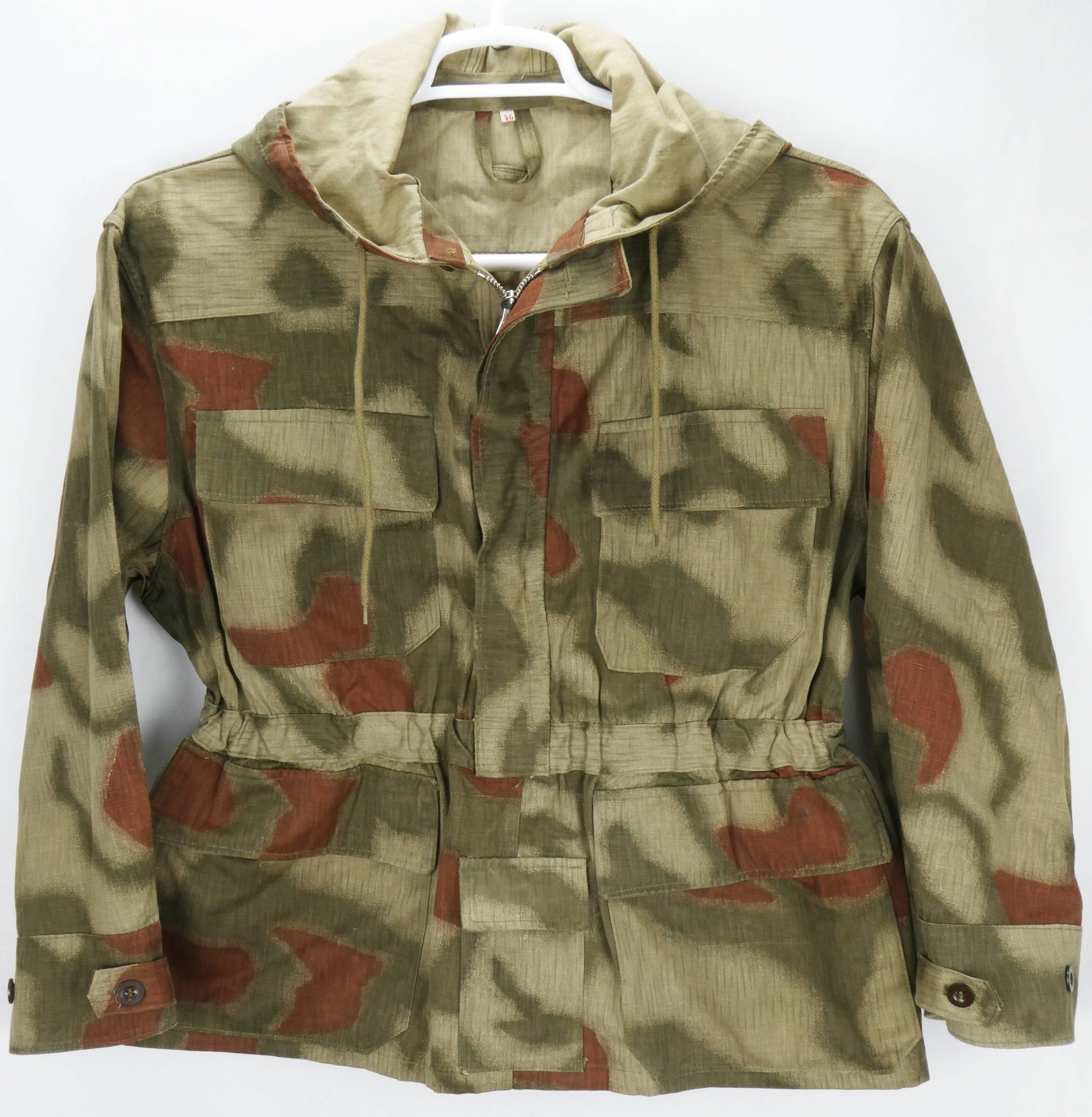
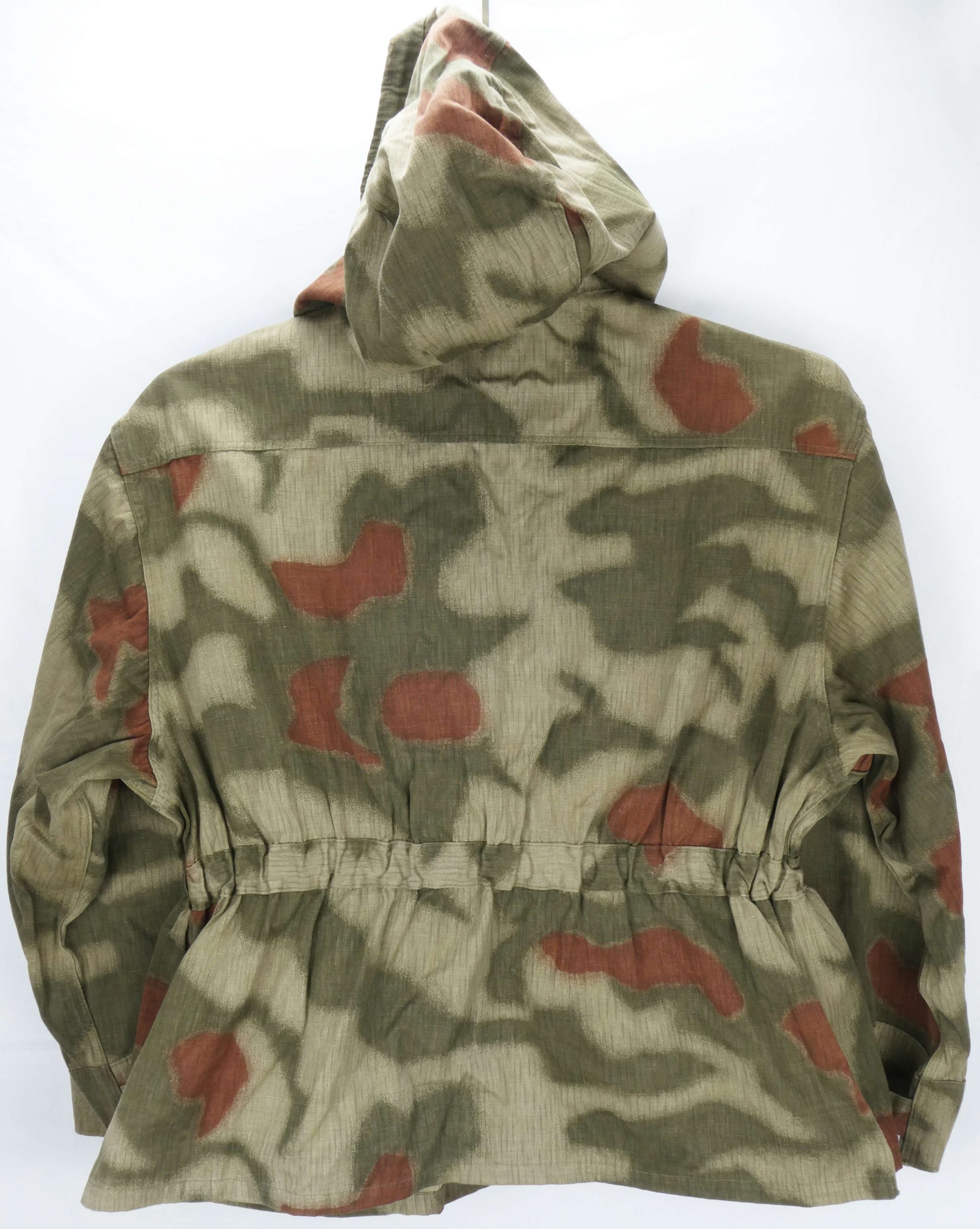
Unlike the later jackets on this page, this smock is a 3/4 zip pullover design with an elastic waist band, clearly based on the camouflage smocks issued to the Waffen SS and Wehrmacht during WW2. The pocket layout is otherwise similar to the others on this page. The prototype was produced from 1957 – 1963 and has 2 and 4 pocket variants [7].
The children whose backs are turned to the camera of the 1965 Stern article‘s picture are wearing this jacket.
Hood:


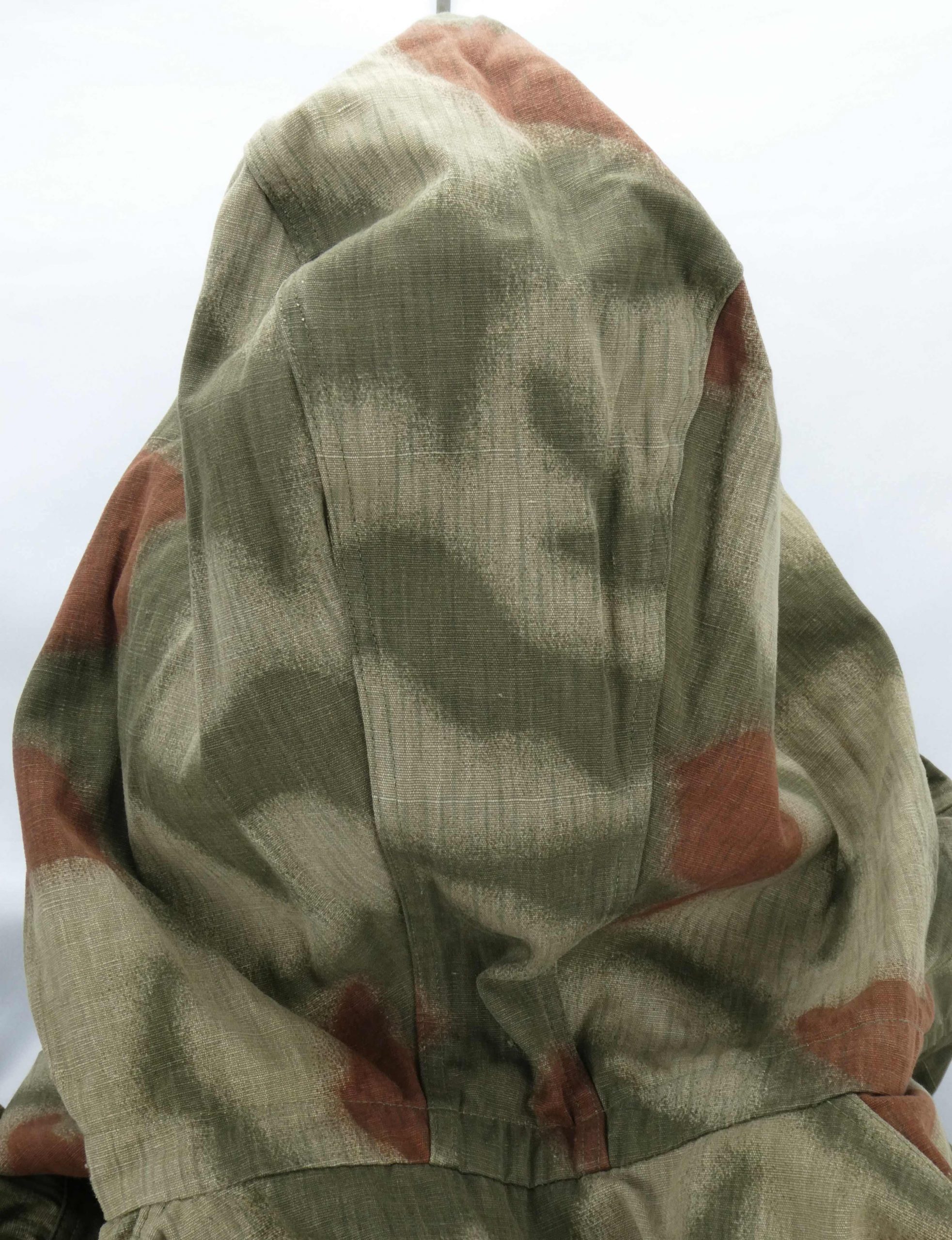
Draw string ends with plastic, like a shoelace.
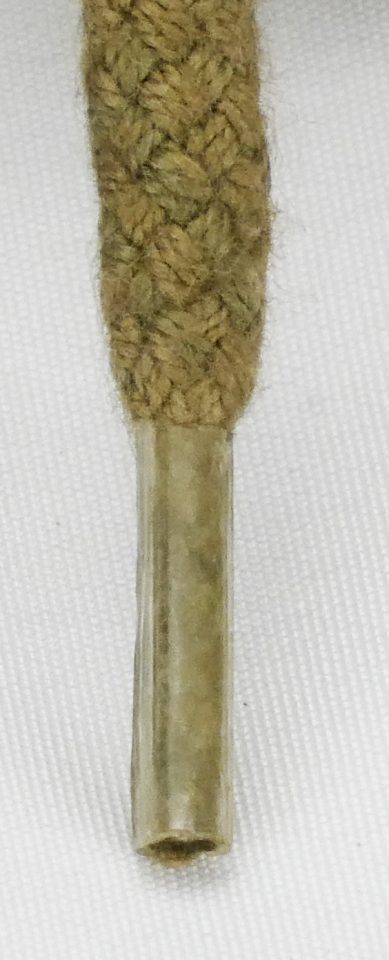
Pockets:
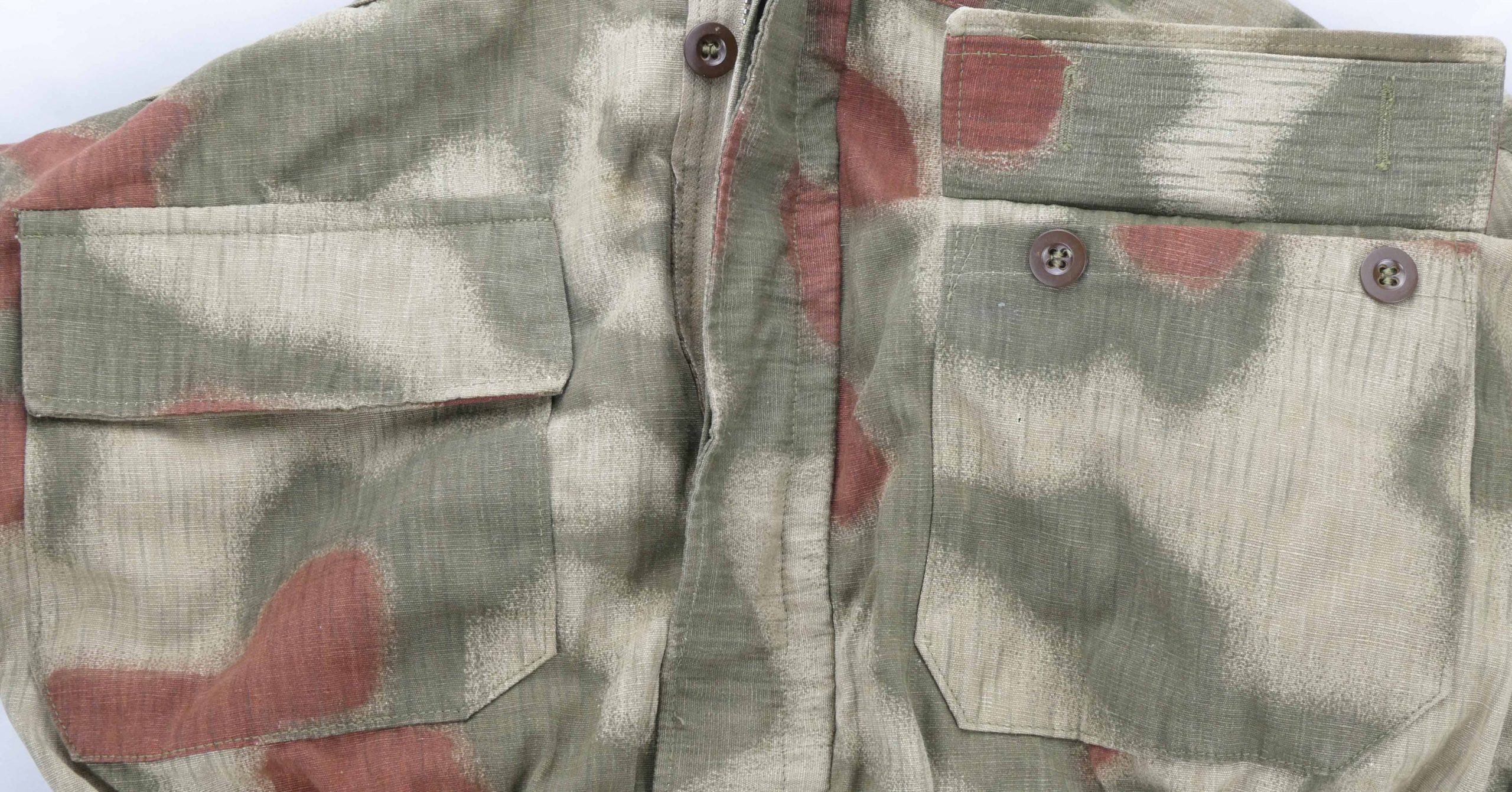
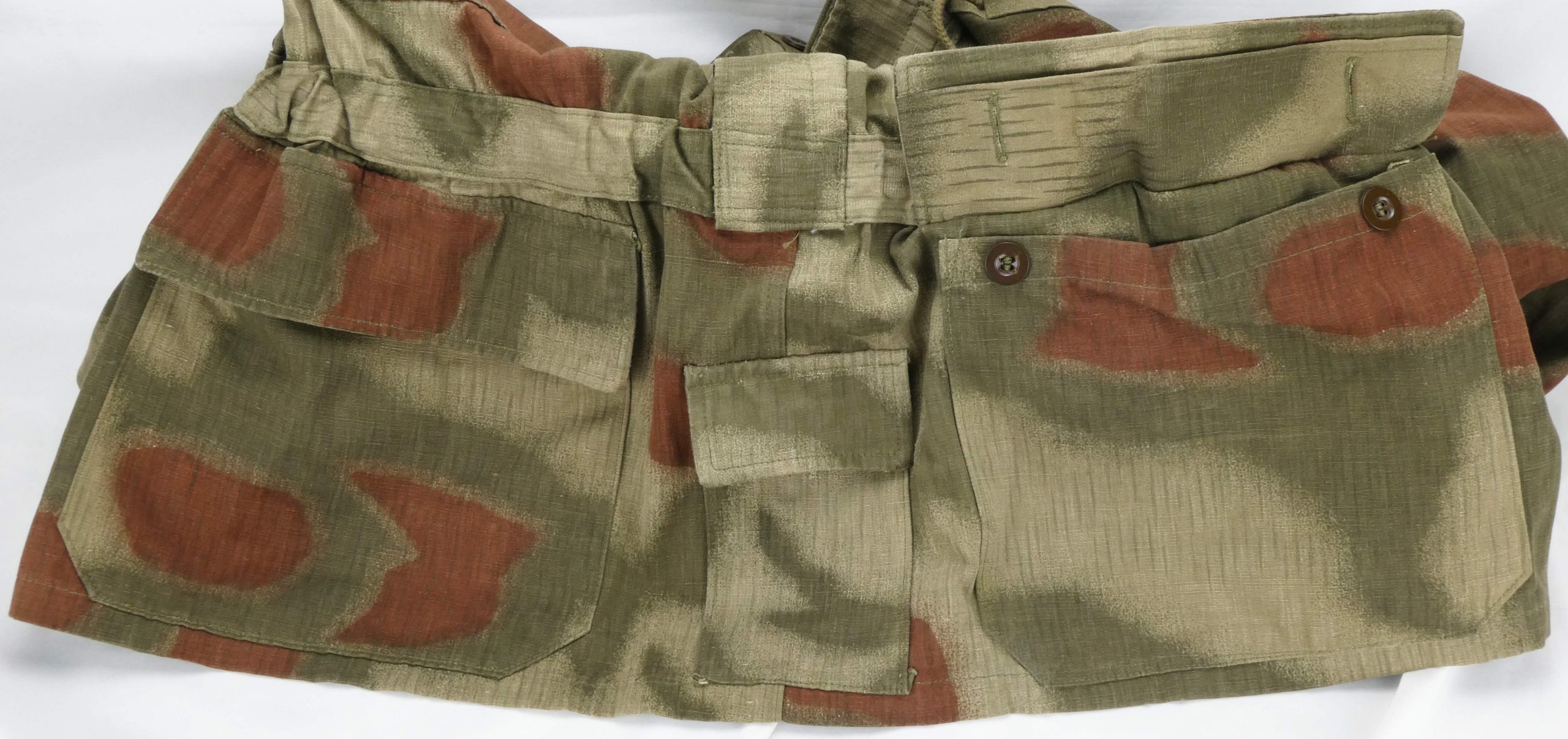
Bandage Pocket:
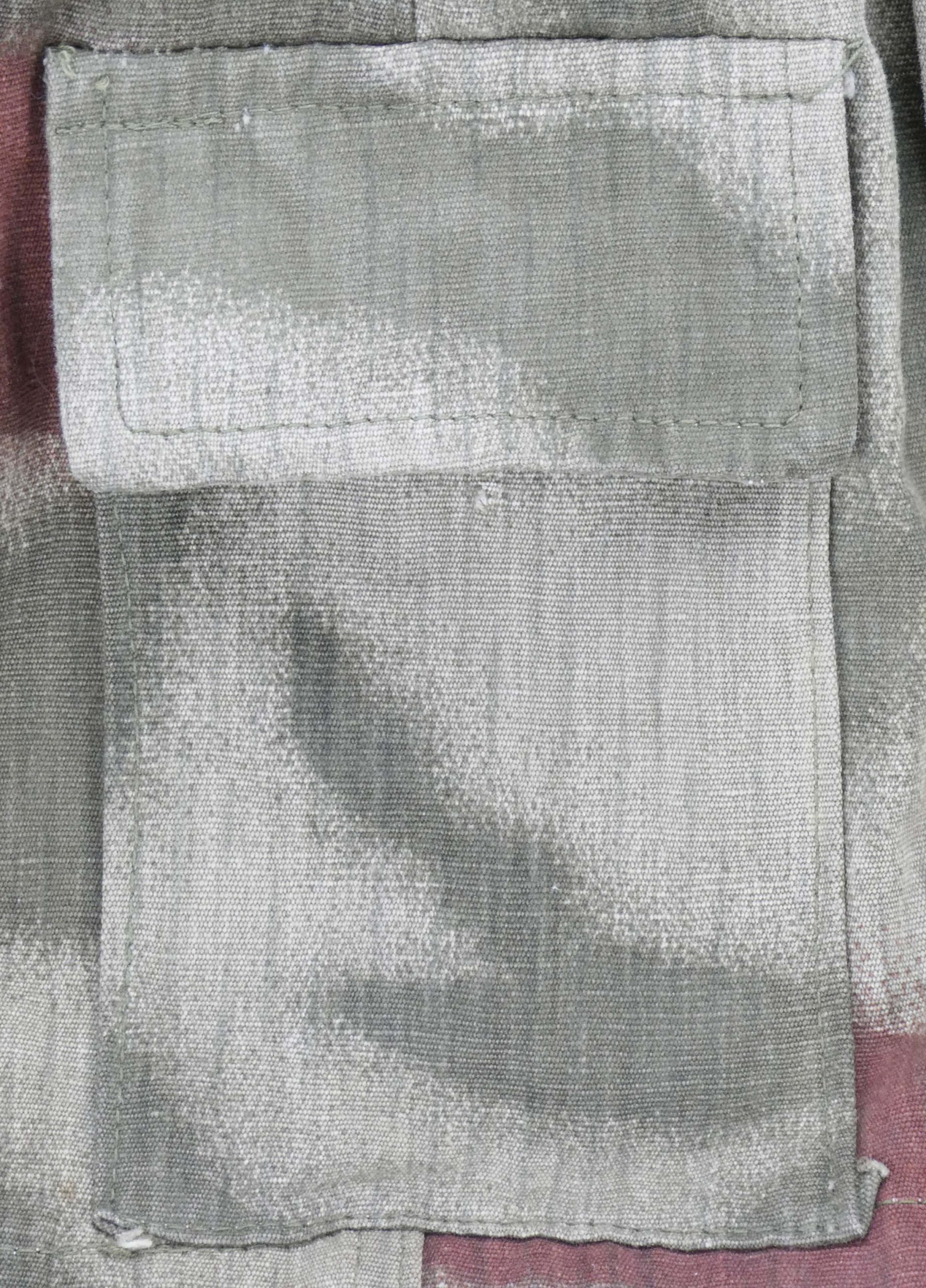

Bandage pocket is located on the outside, unlike in the later examples.
Cuffs:

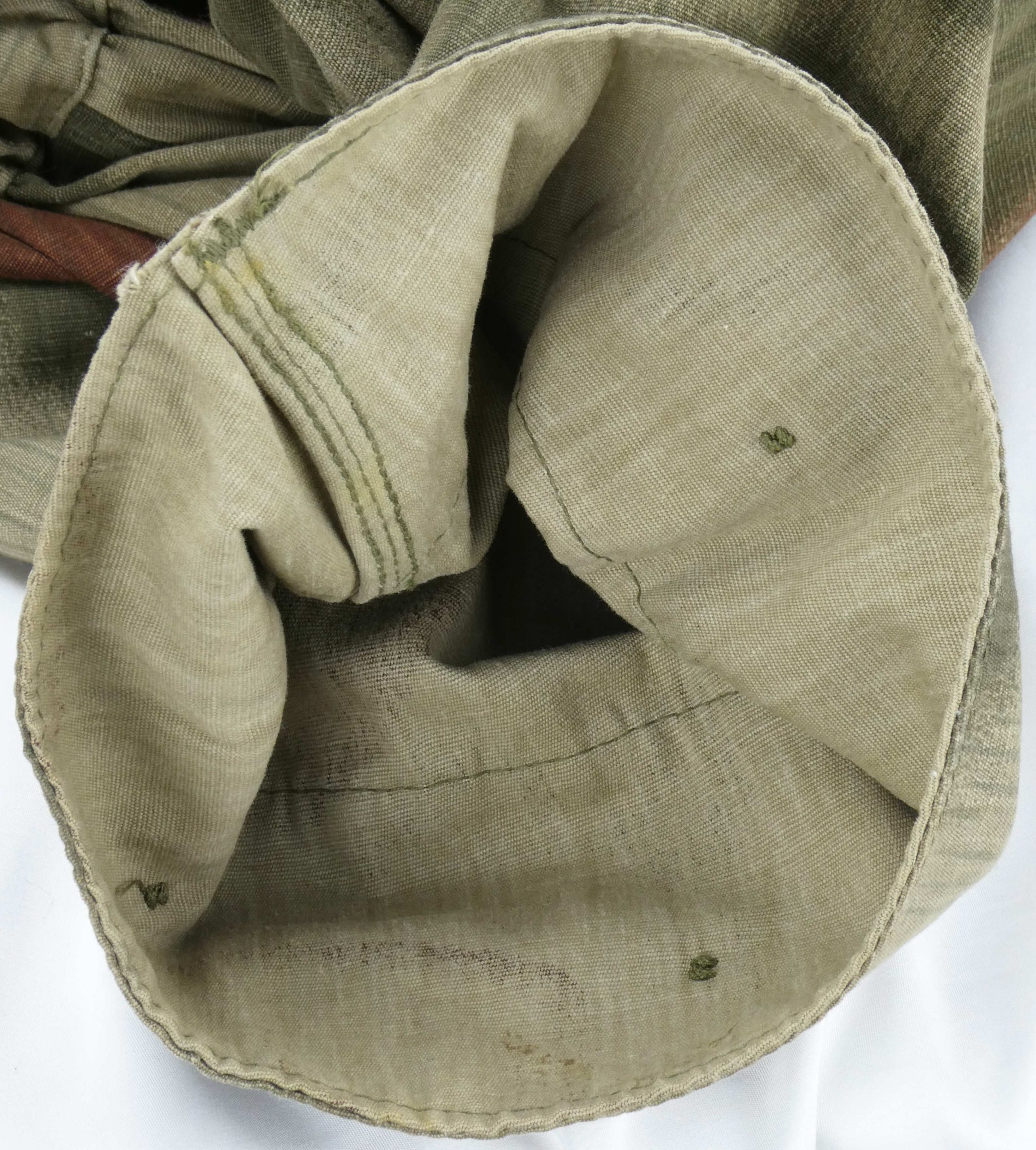
Zipper:
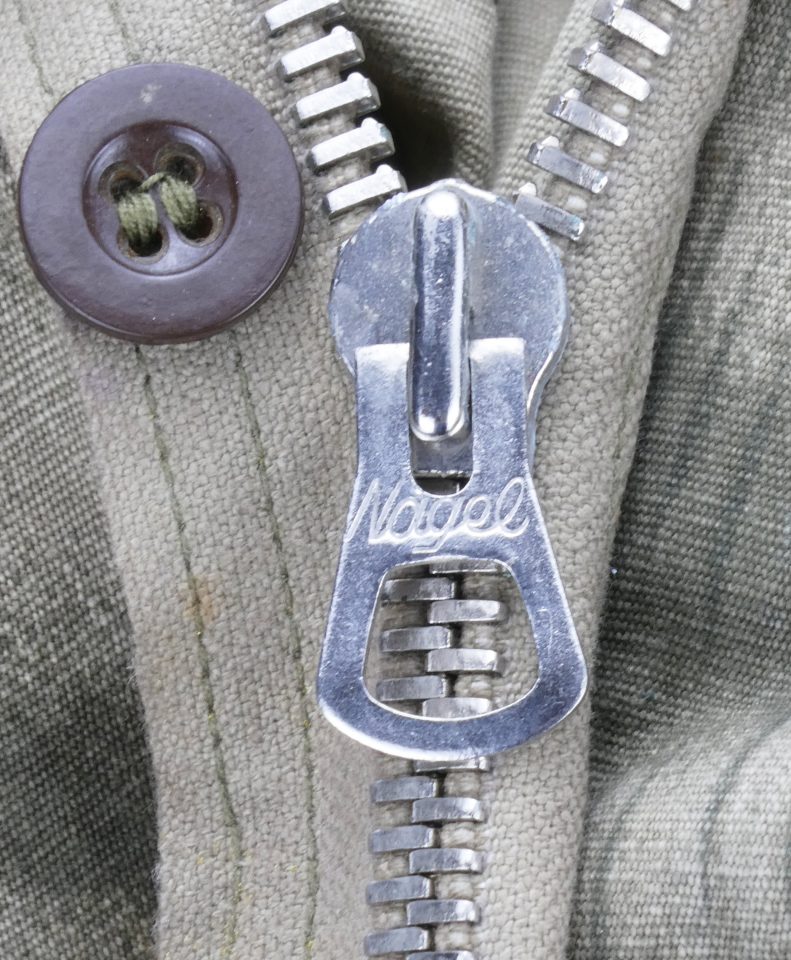
Inside:
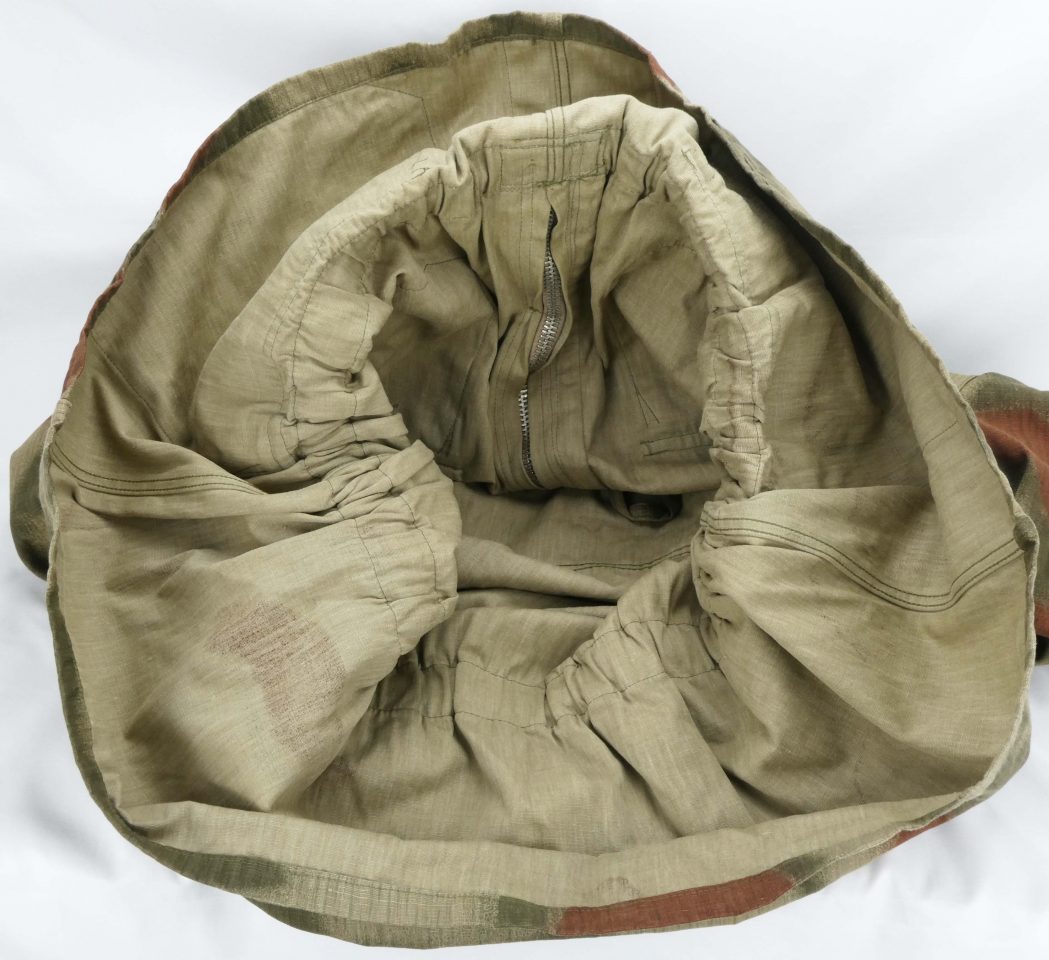
Tag:
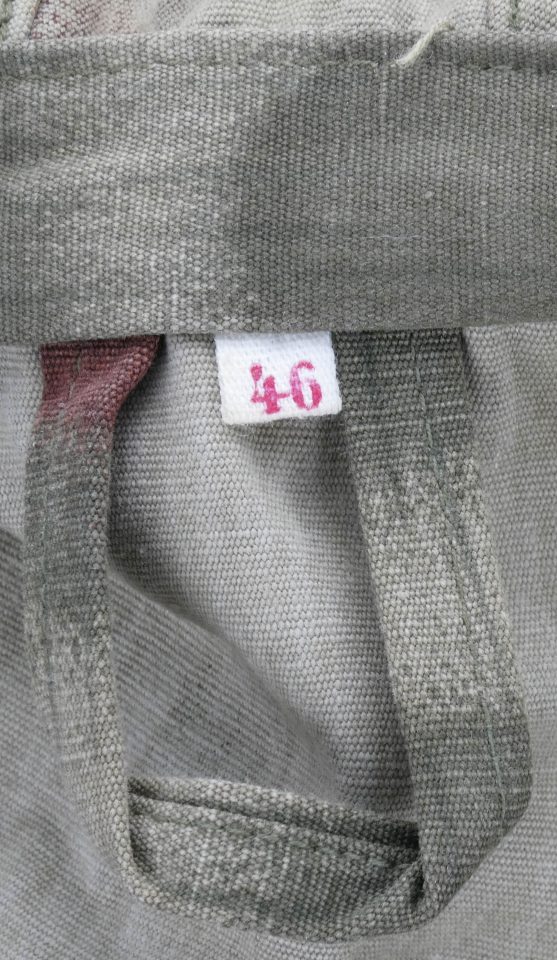
This size tag is the only manufacturer’s marking on the smock.
Buttons:
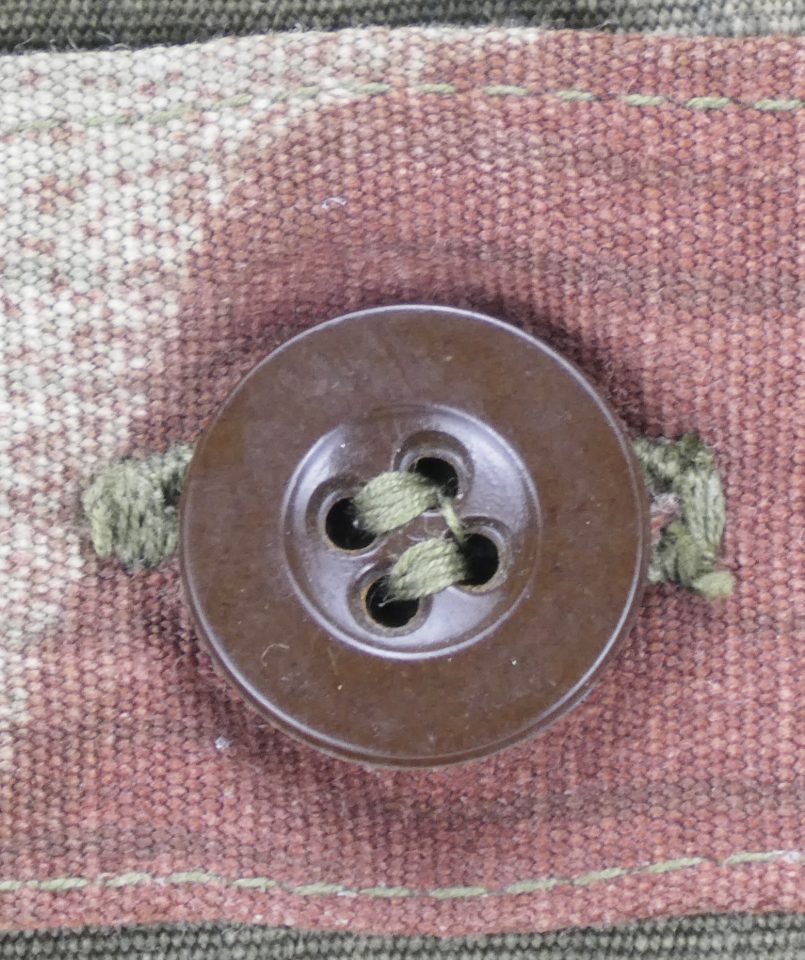
Flat brown plastic dish pan buttons, similar to Bundeswehr Splinter jacket.
Usage Photos:

